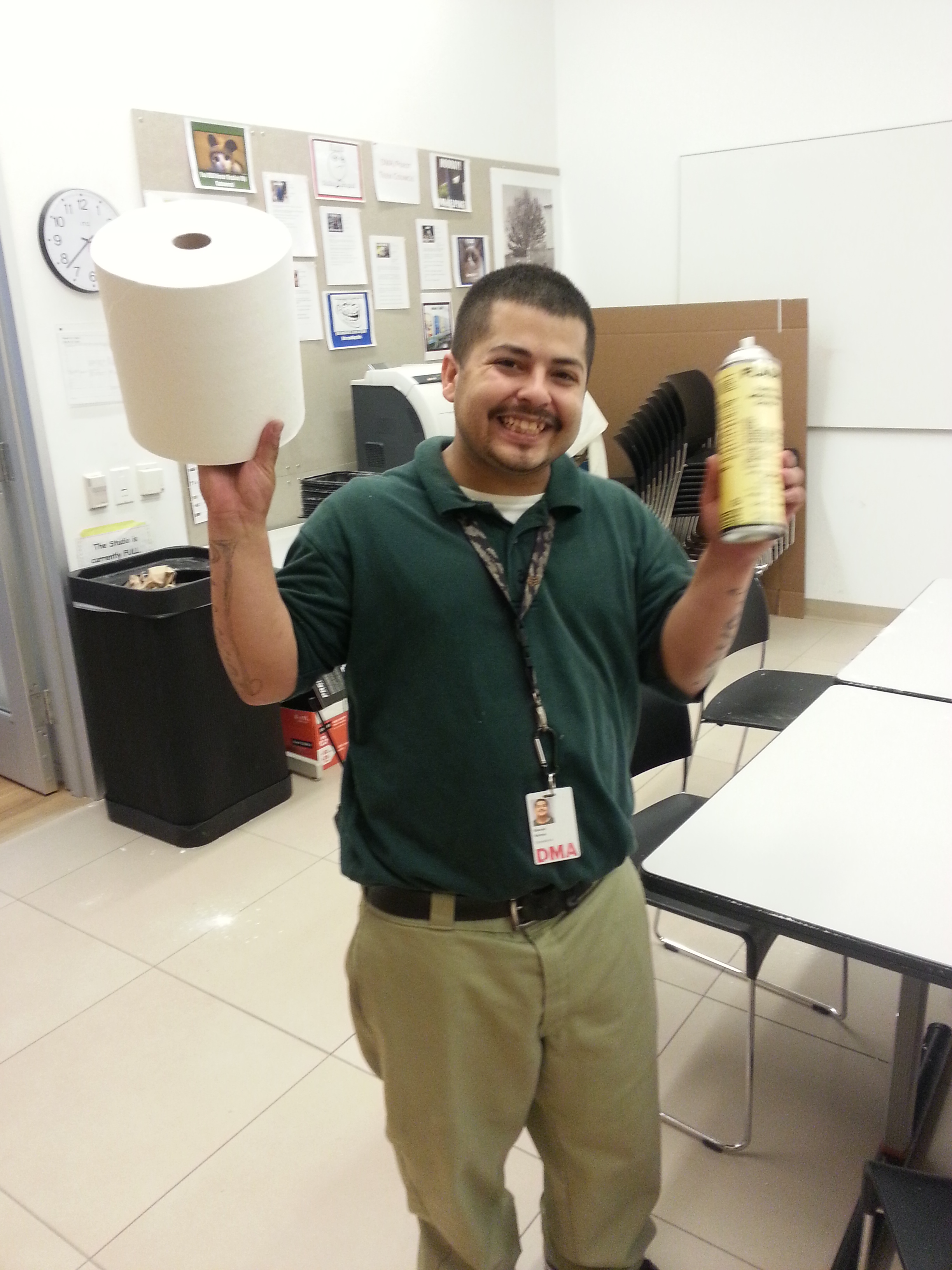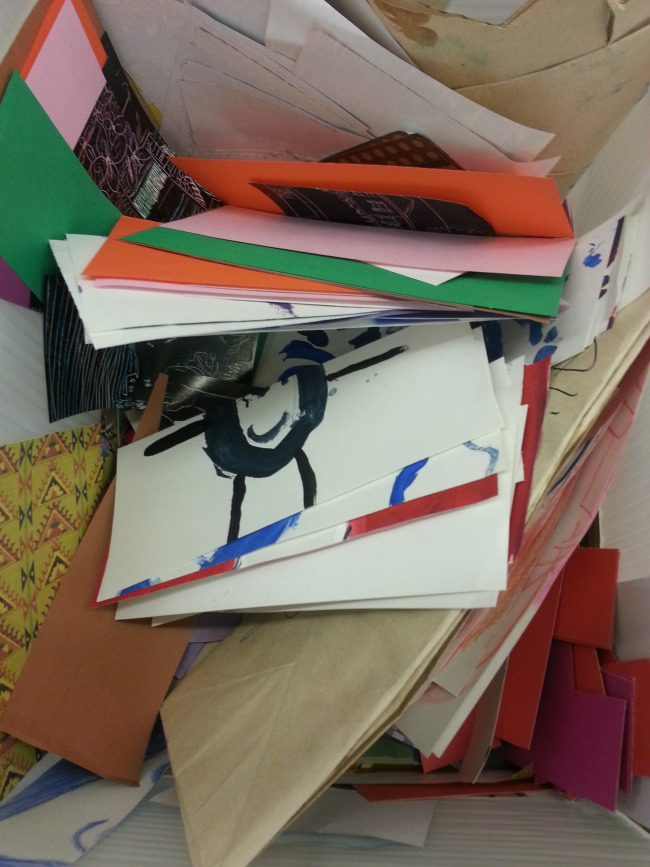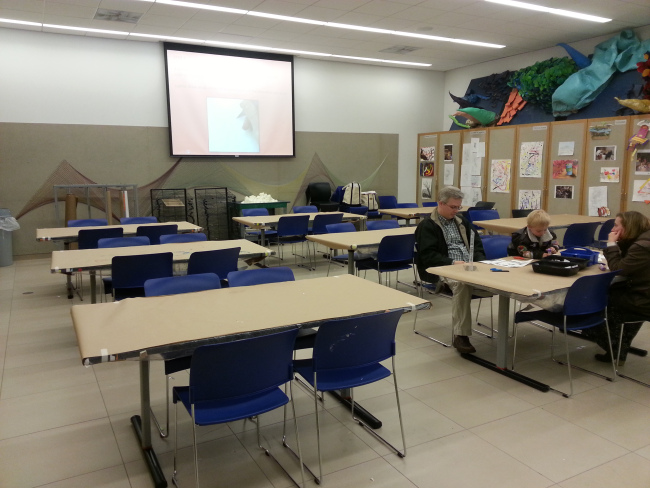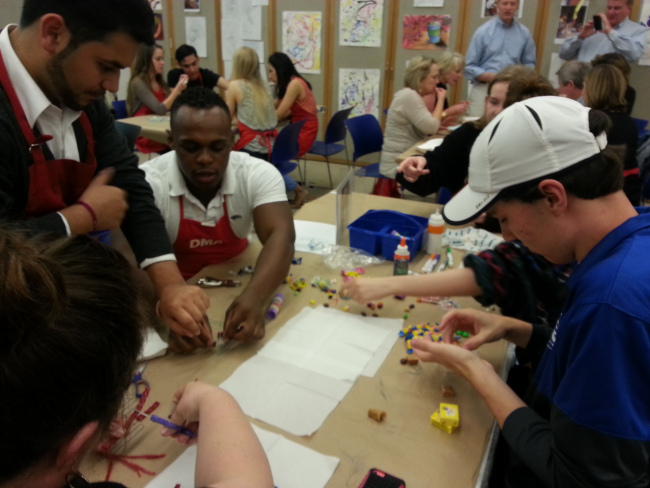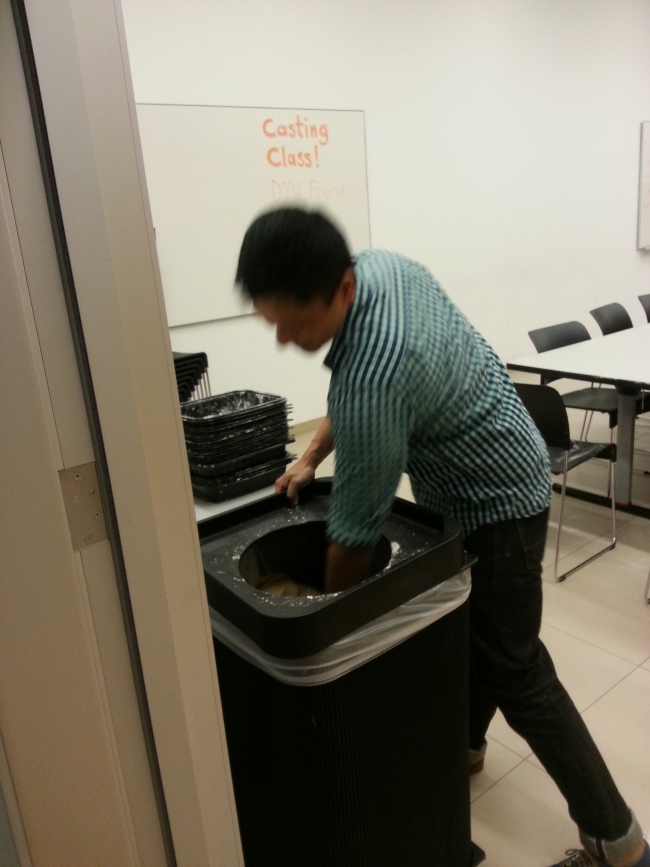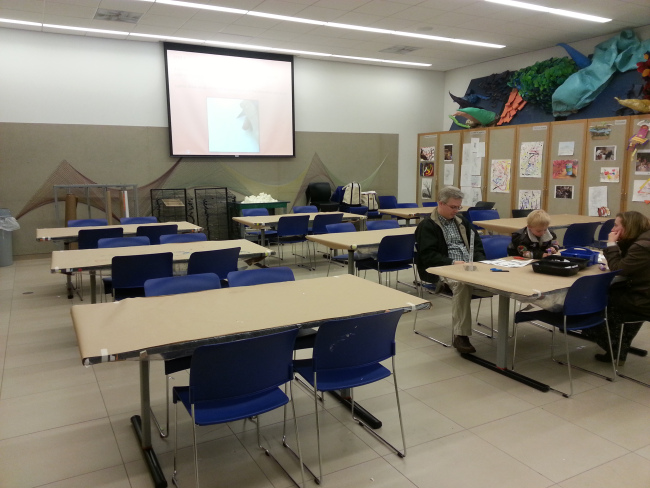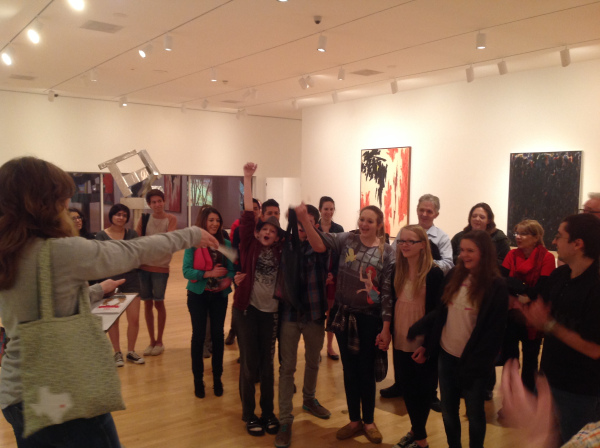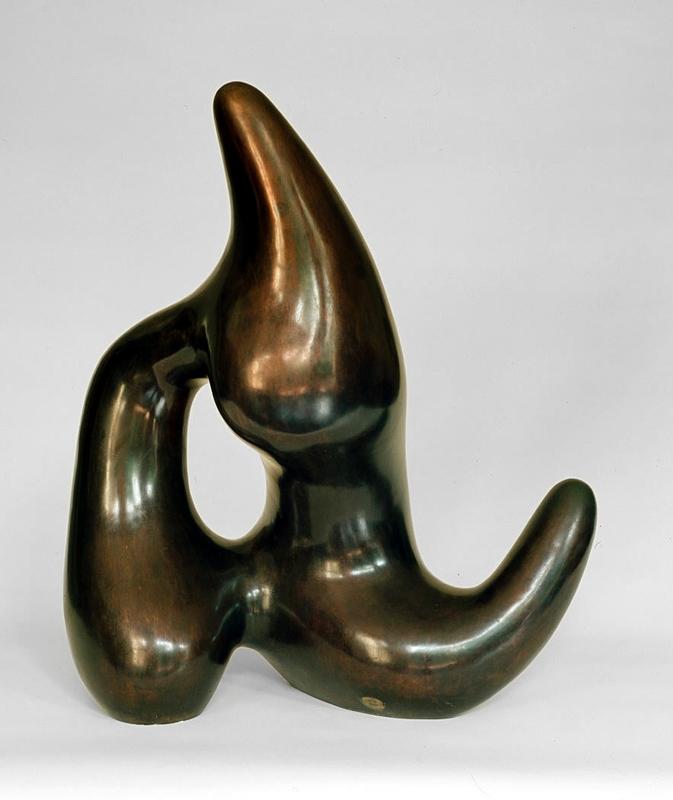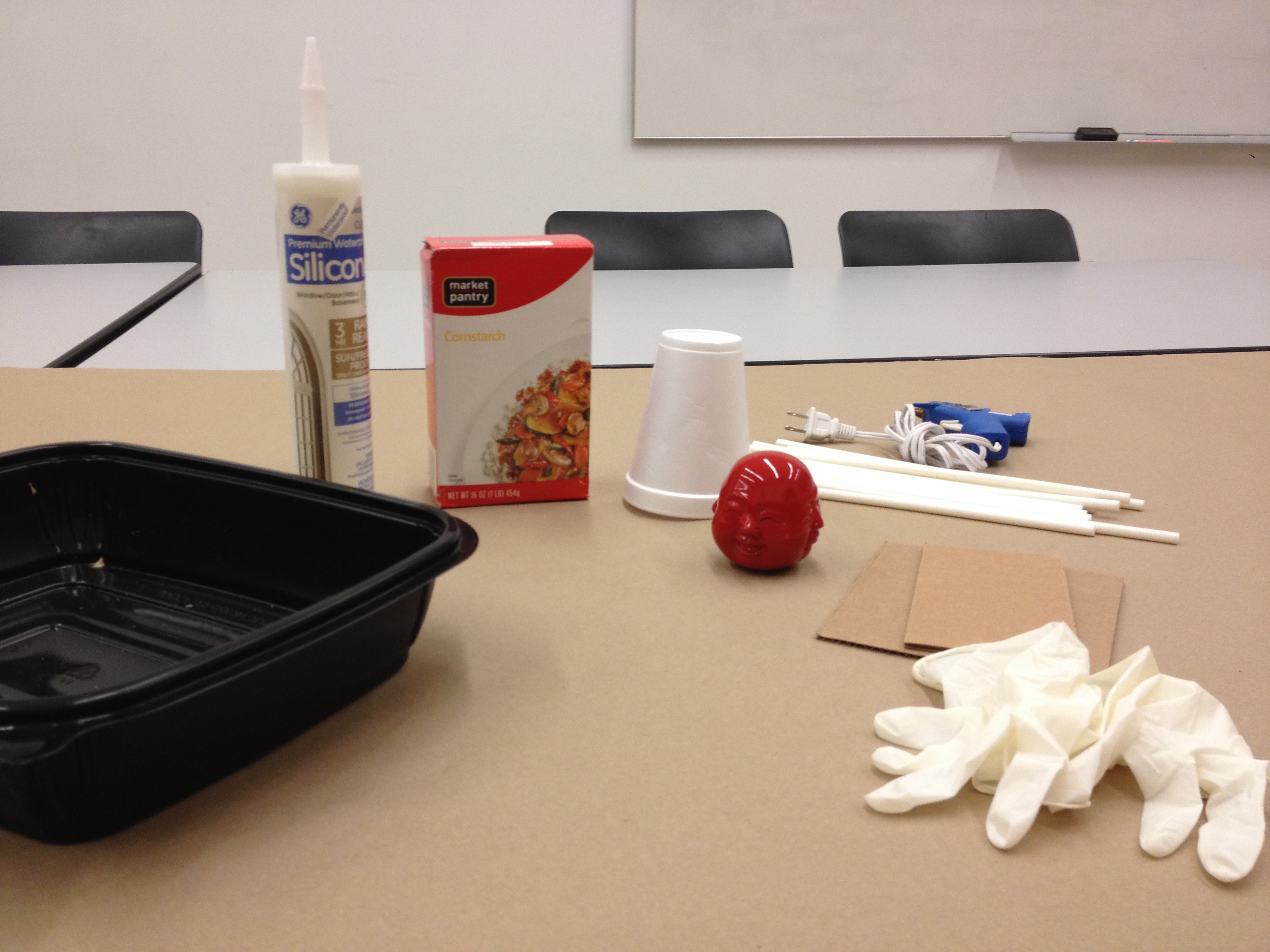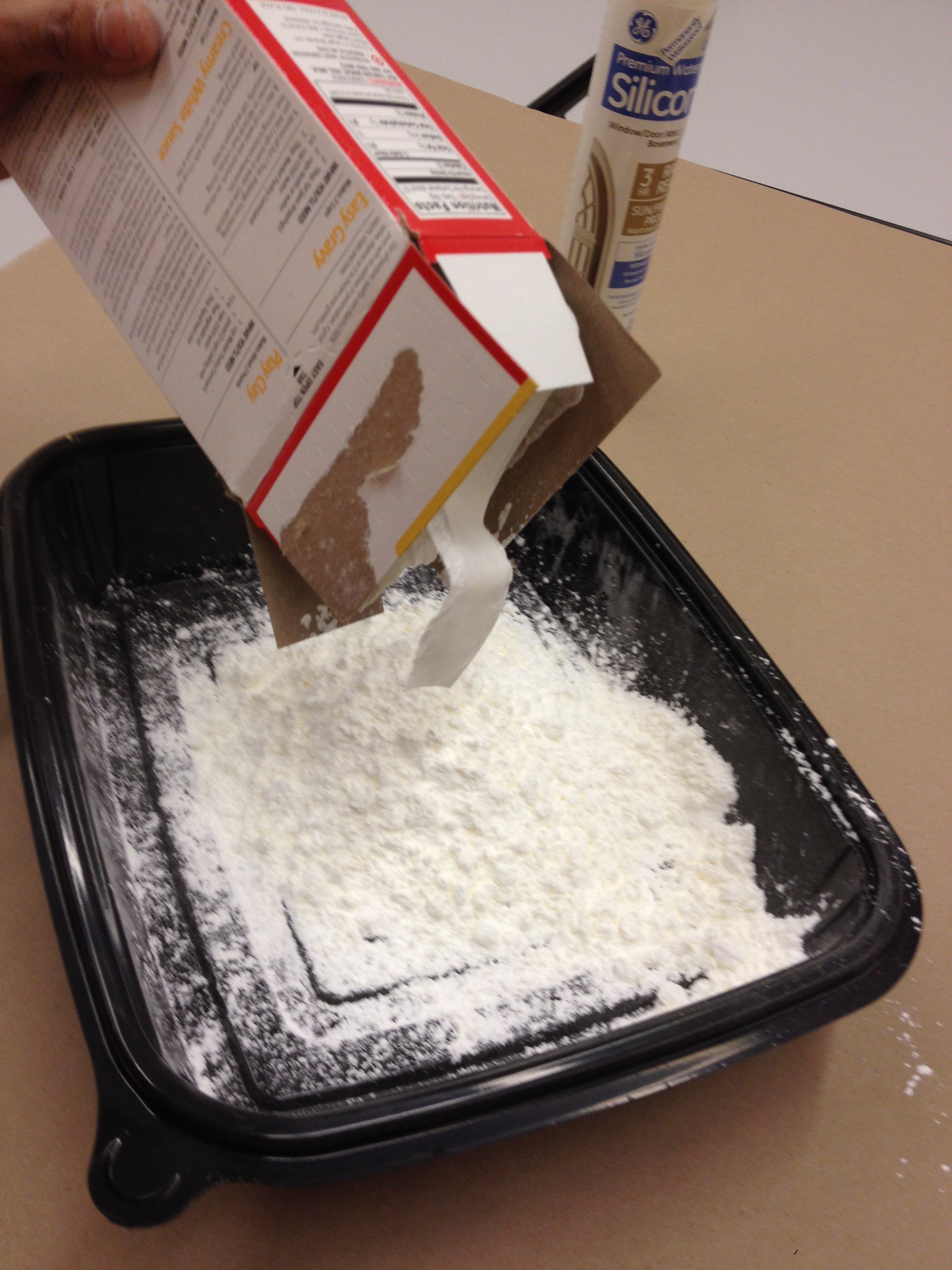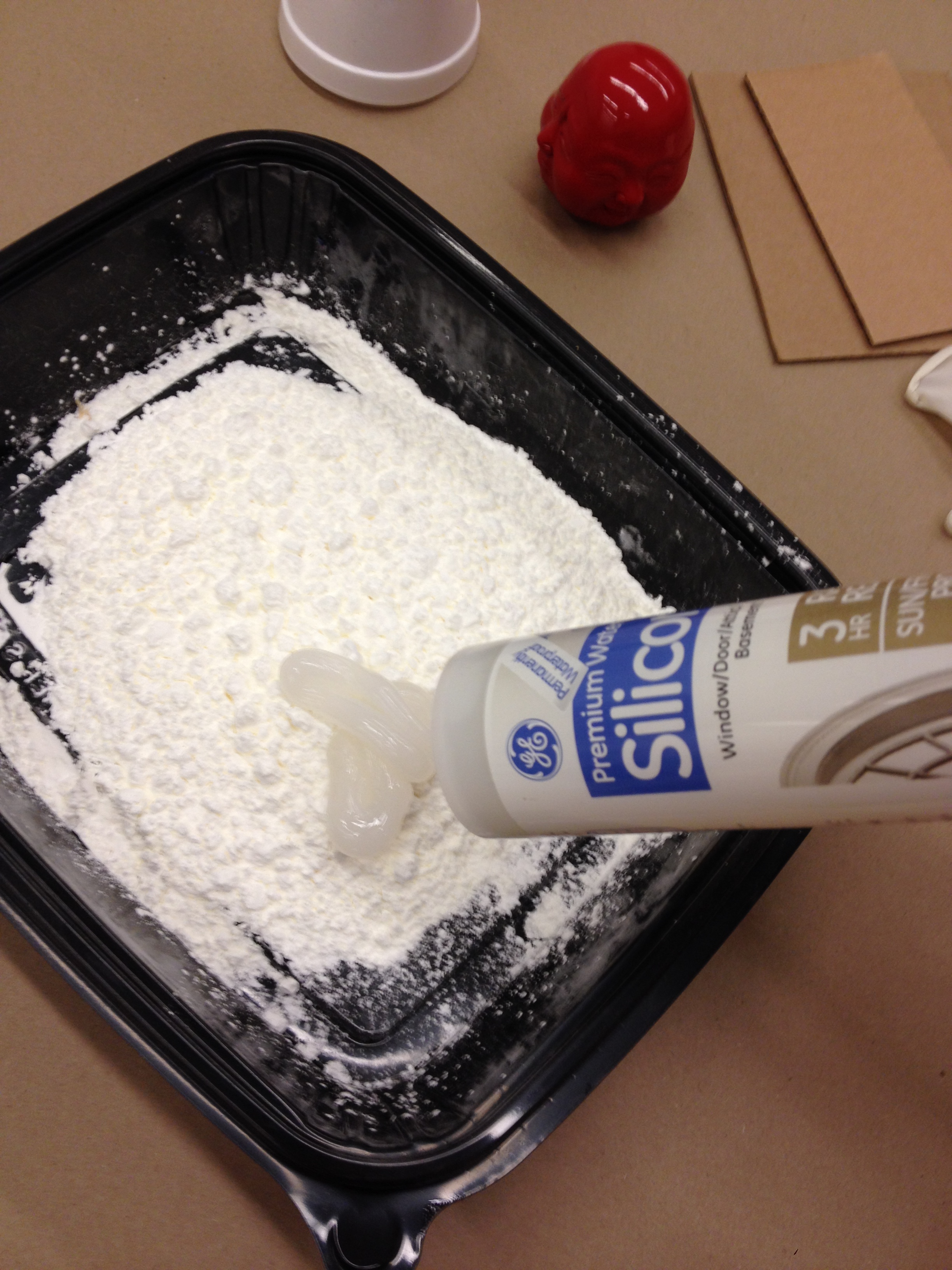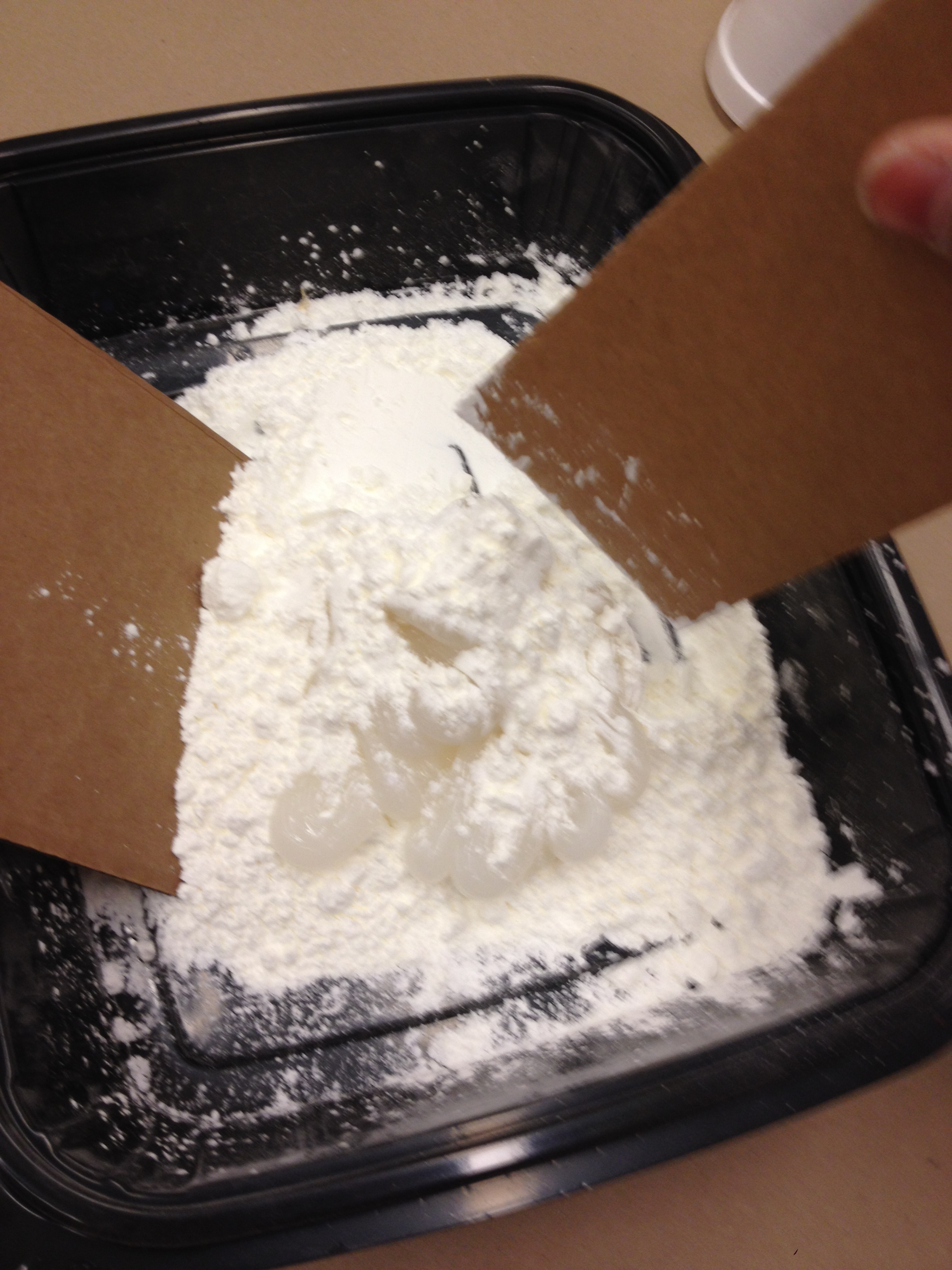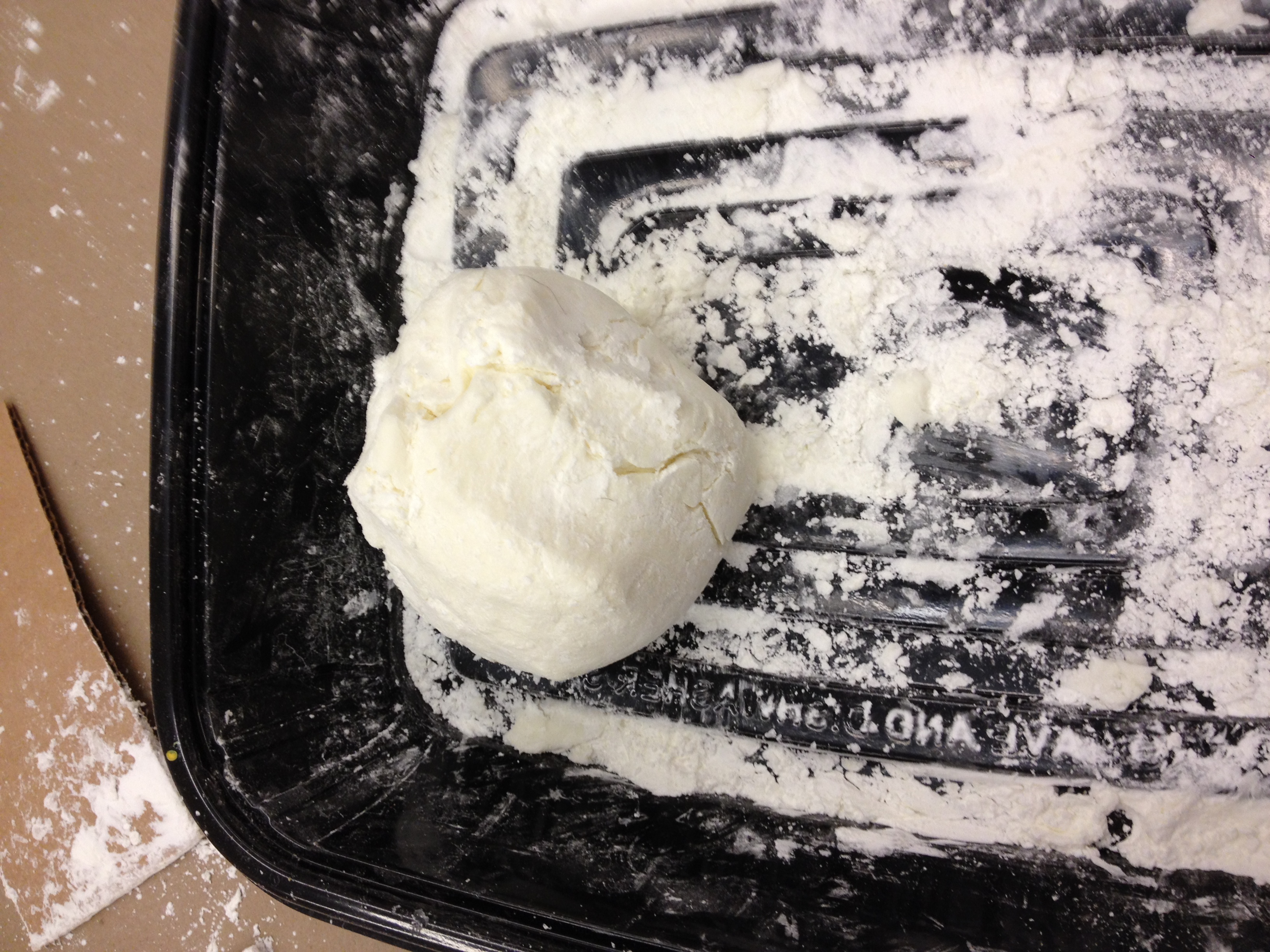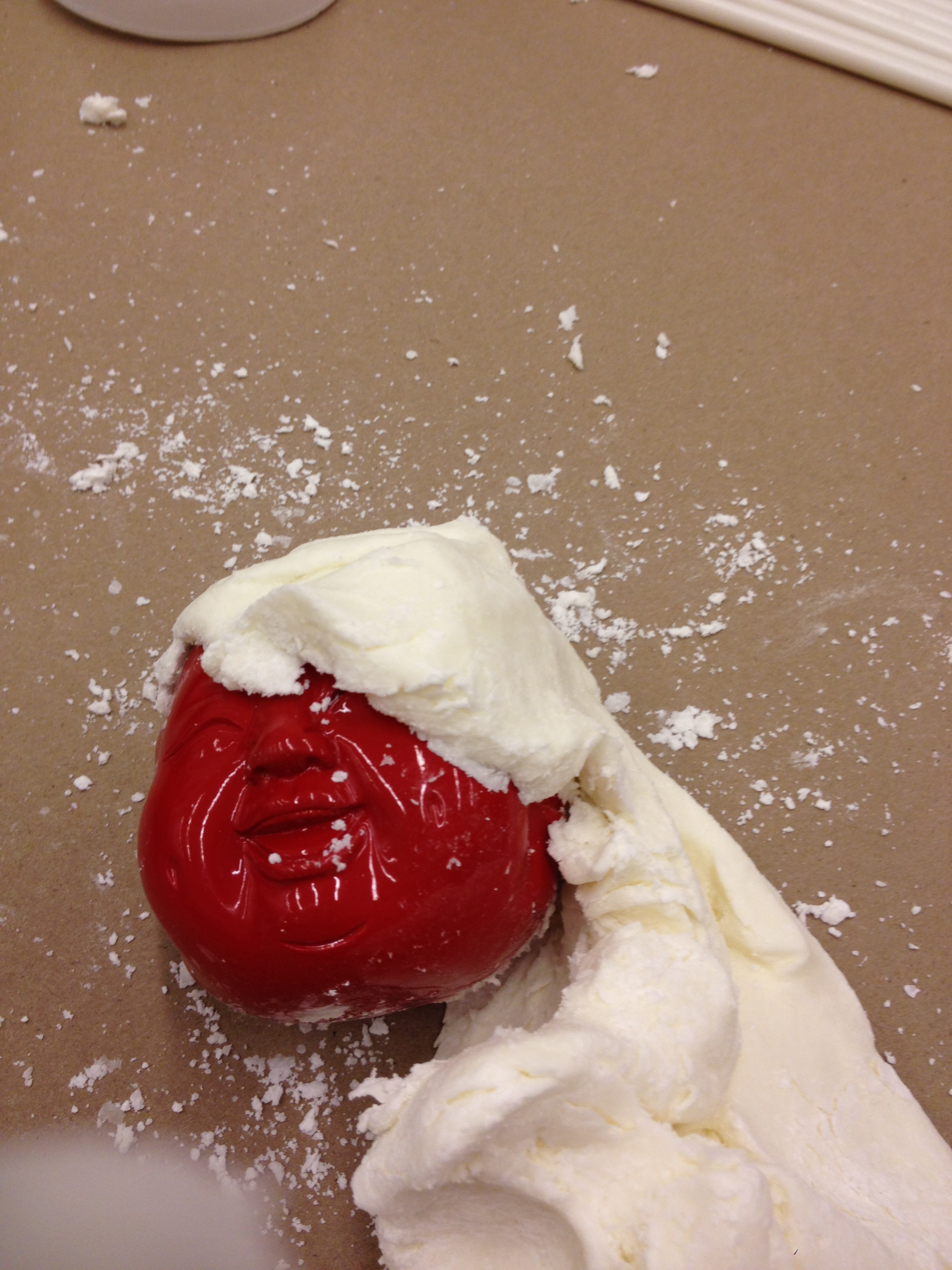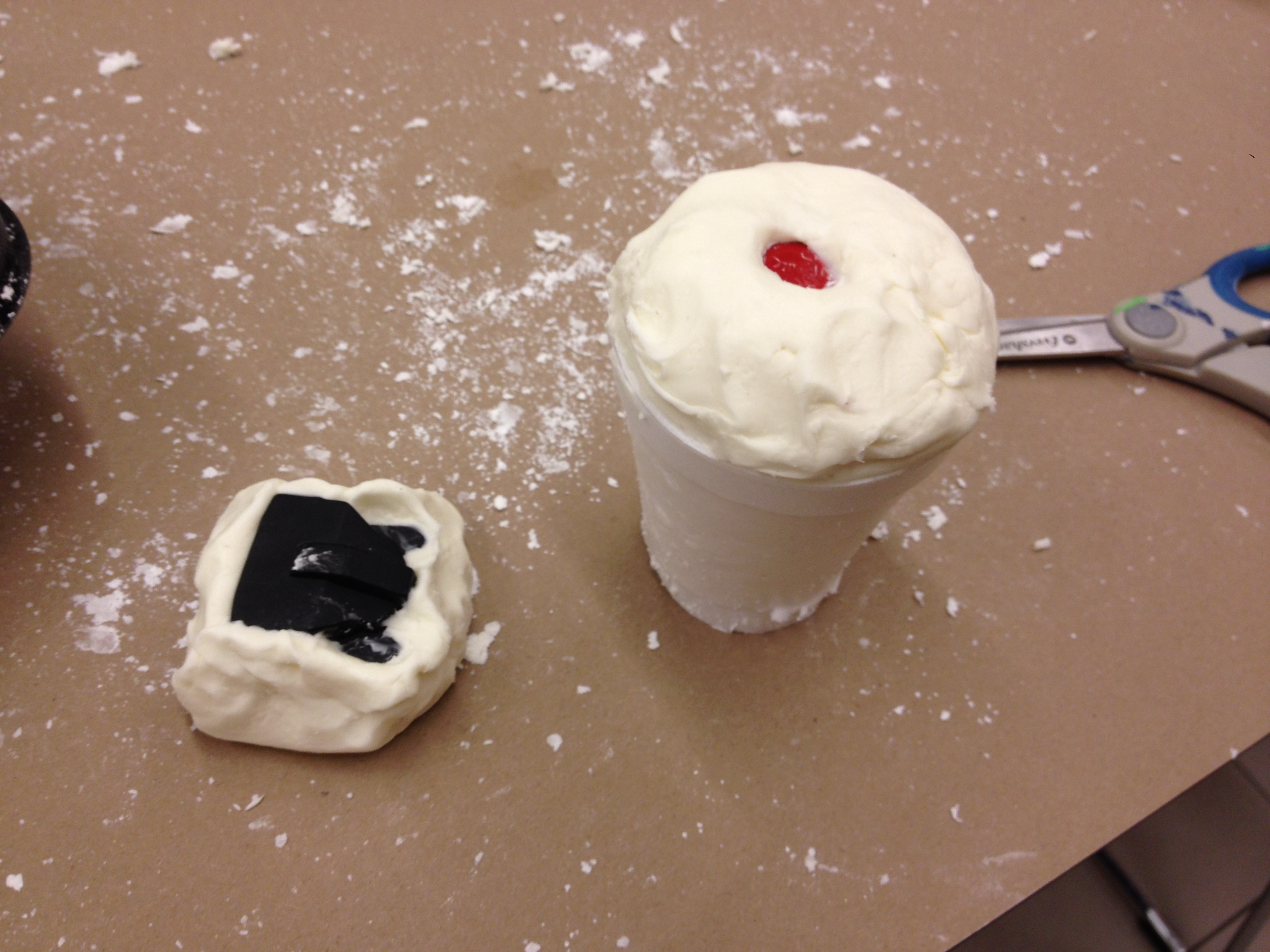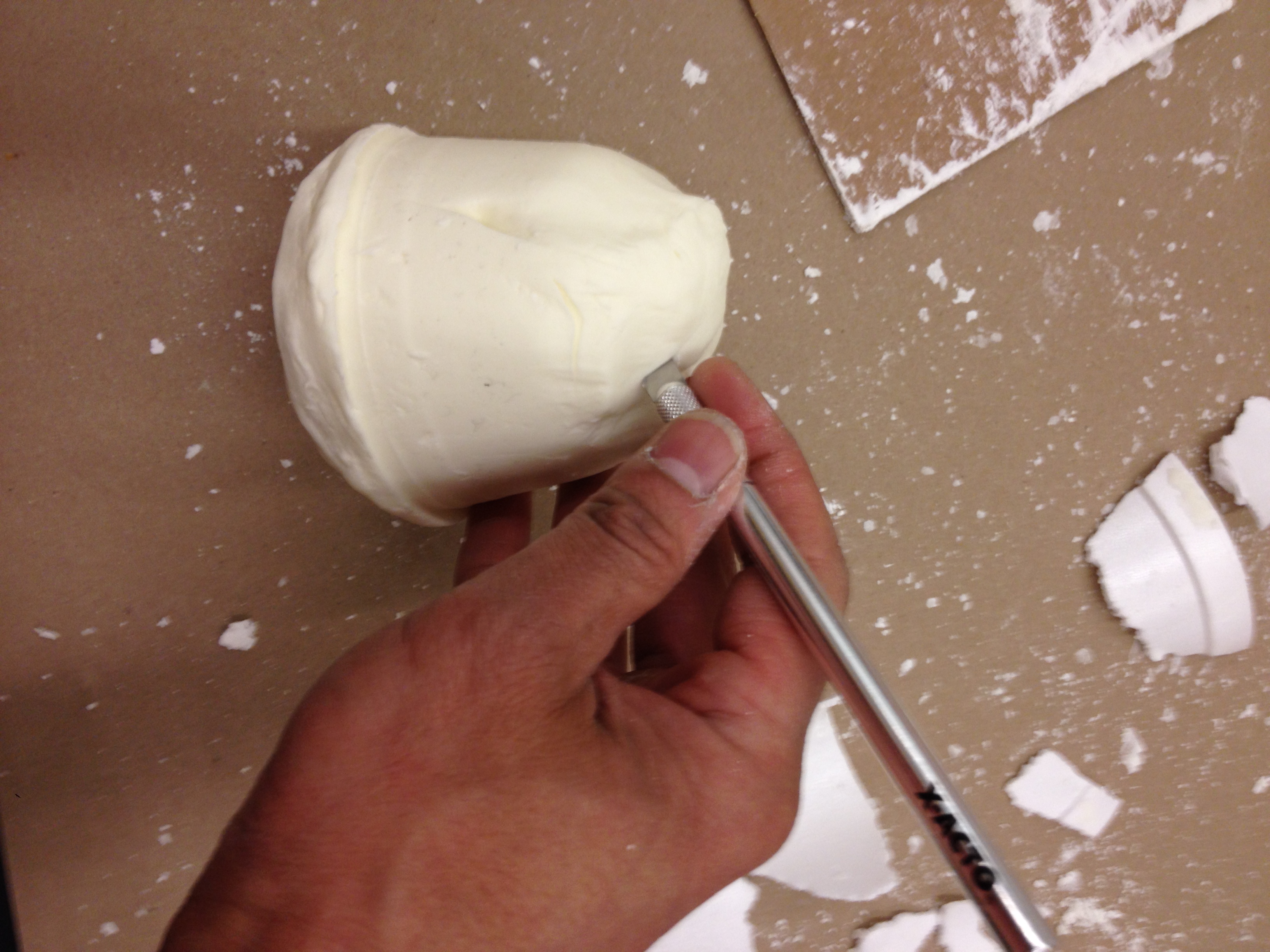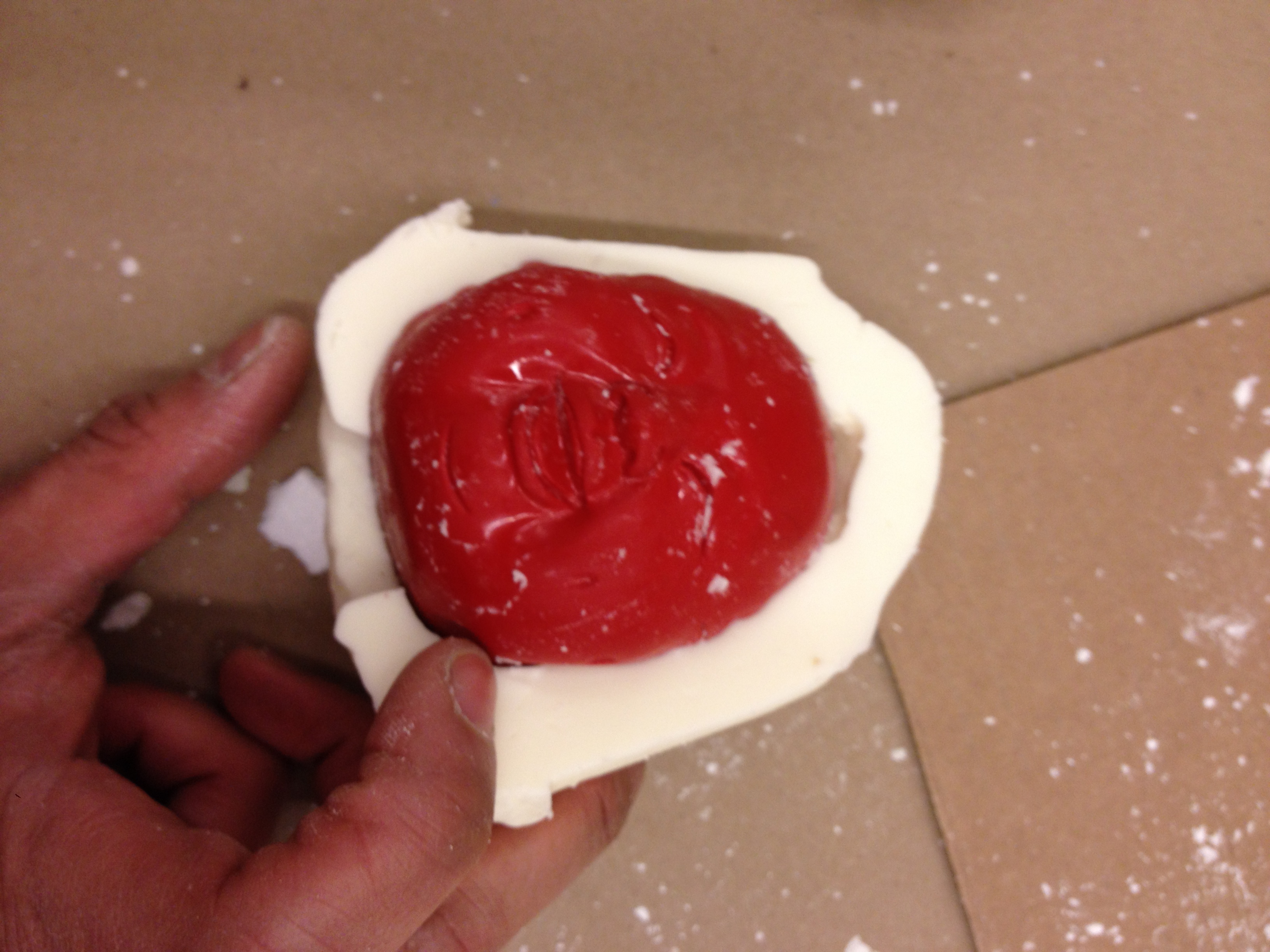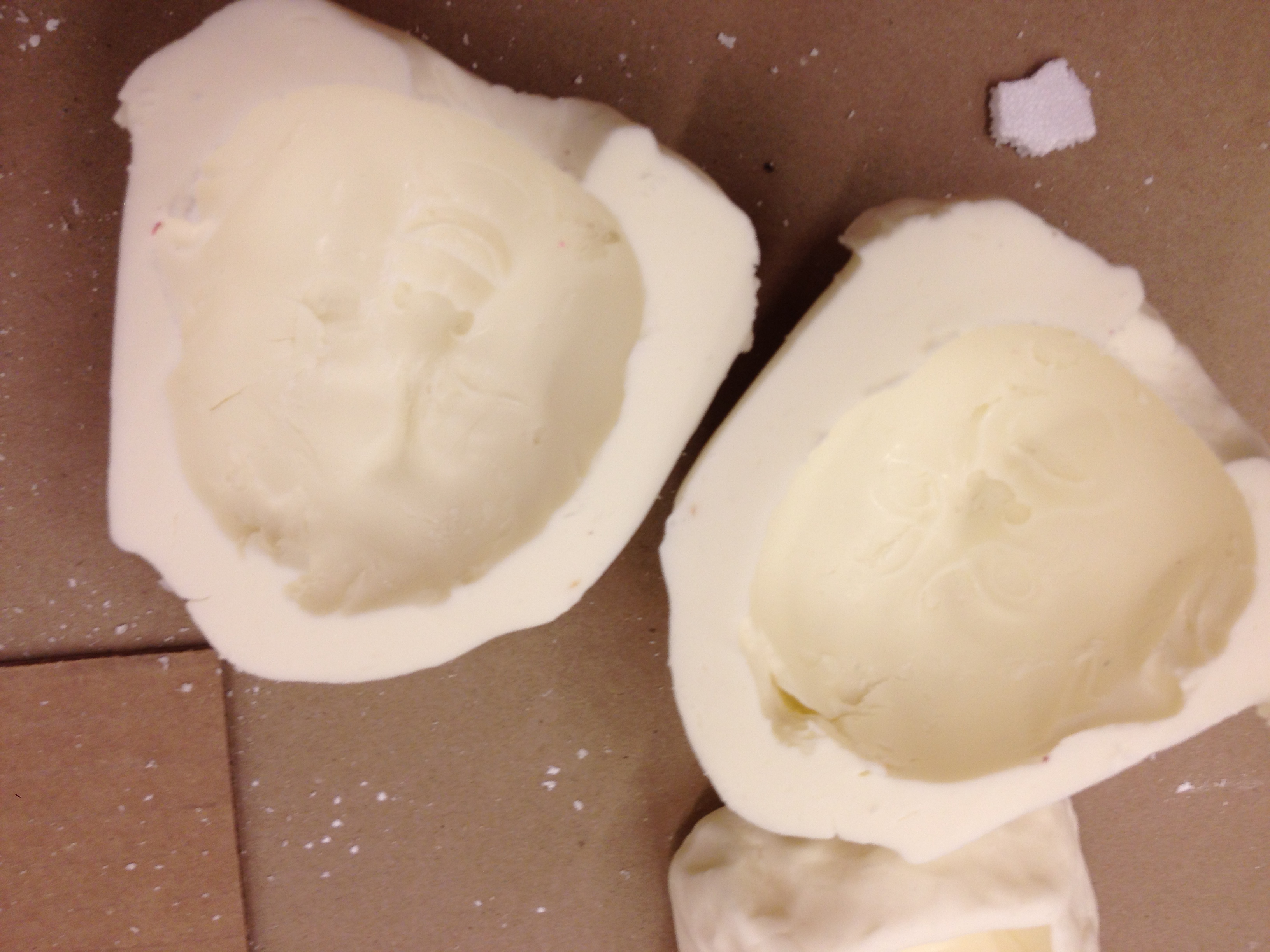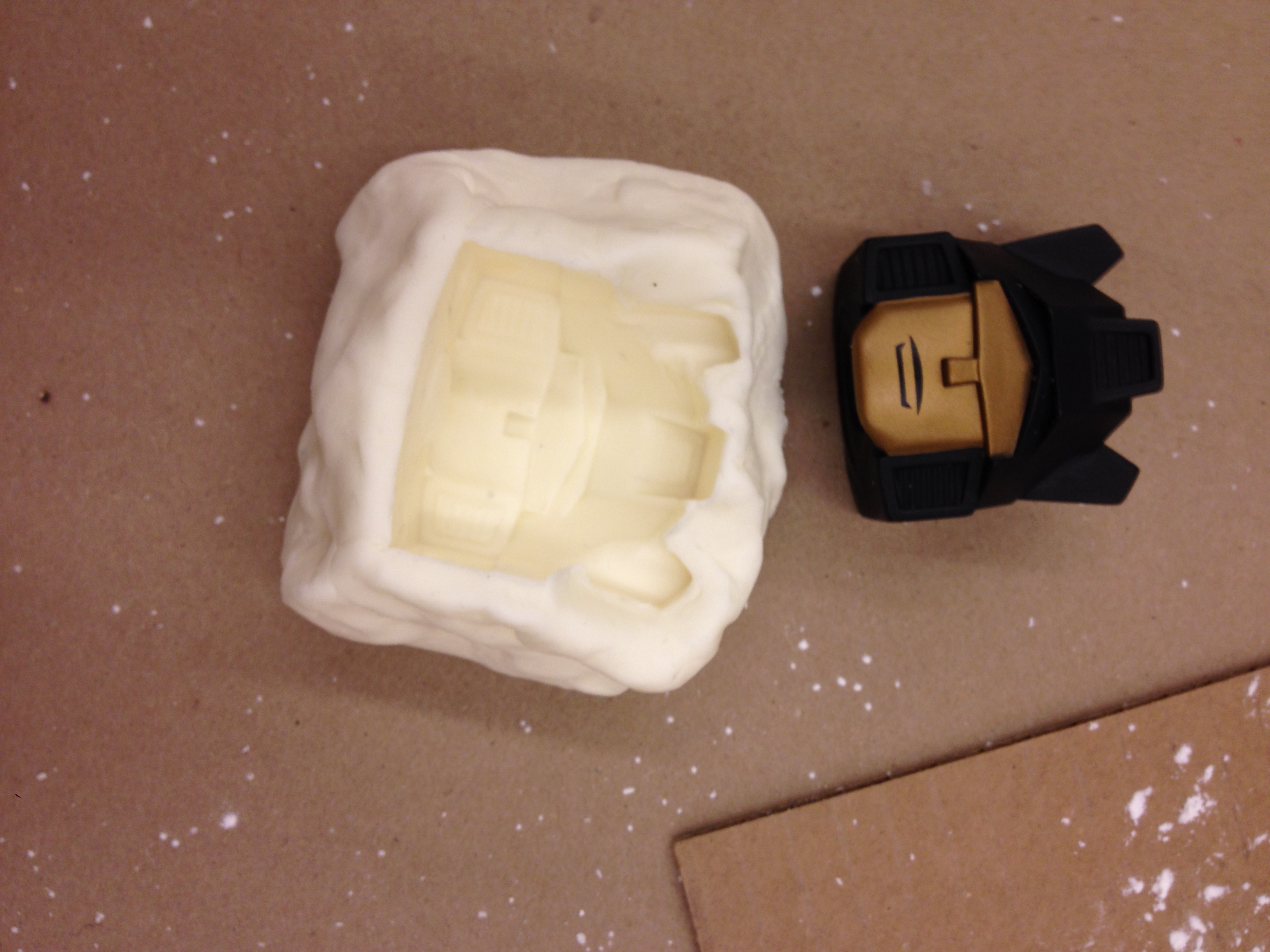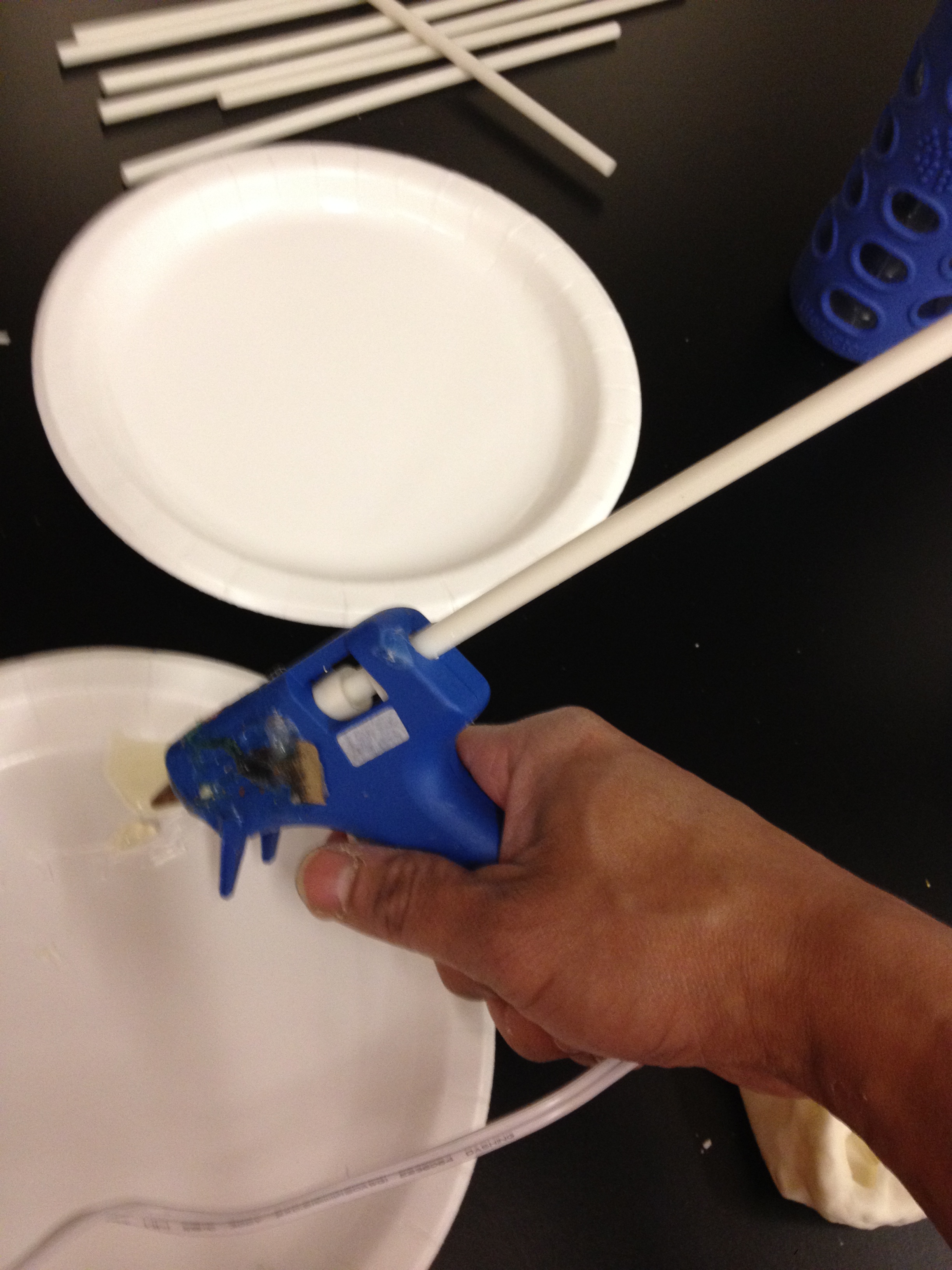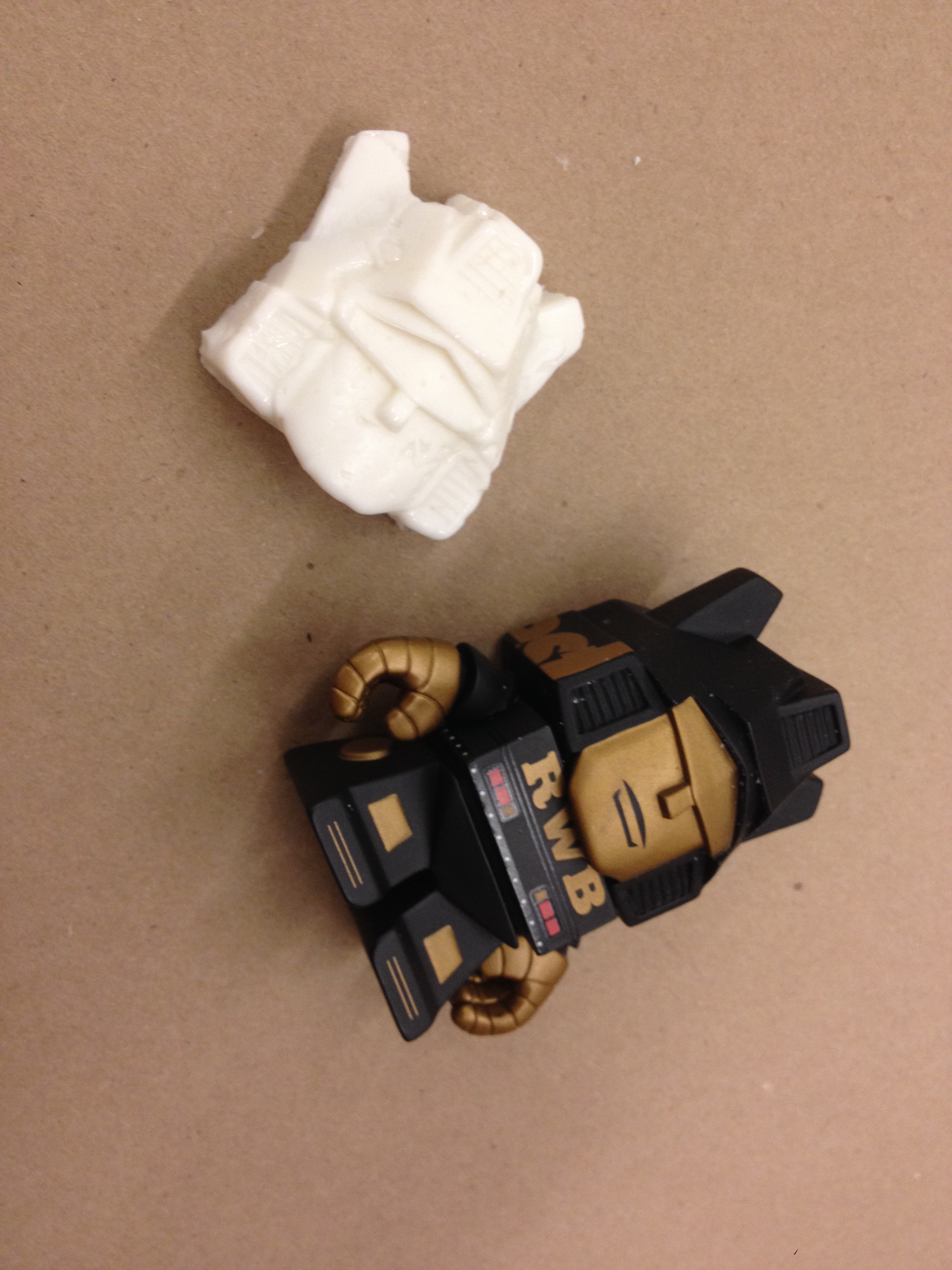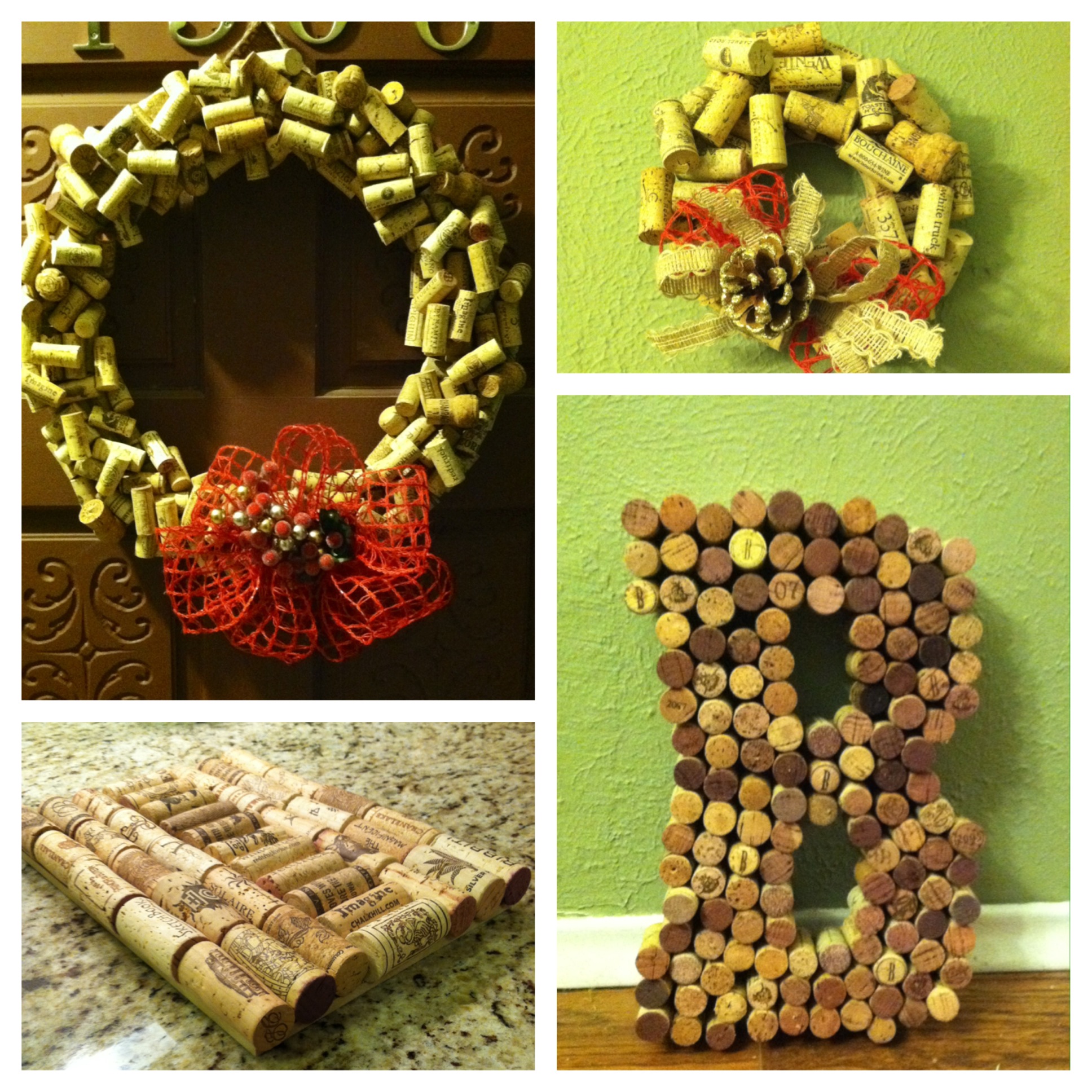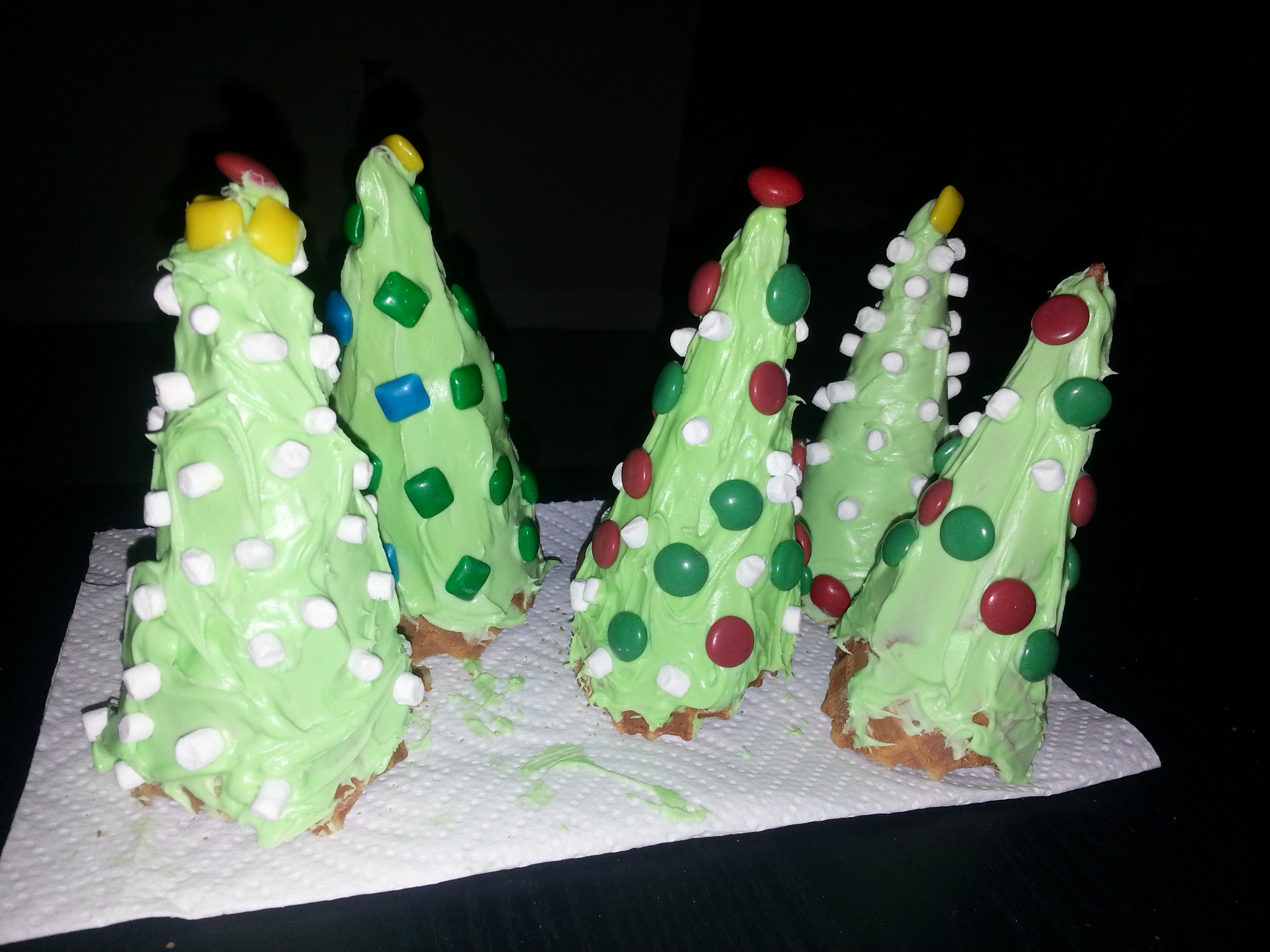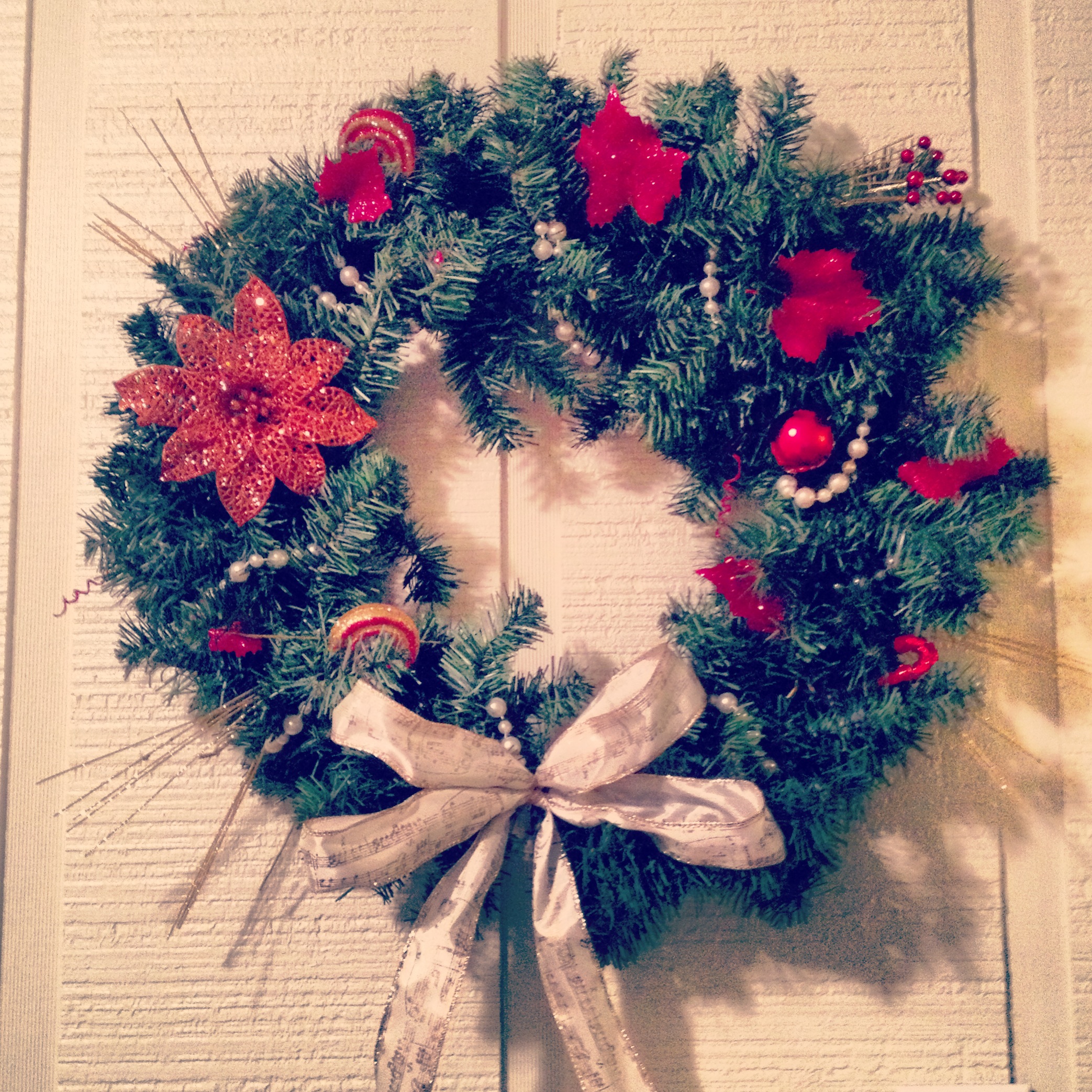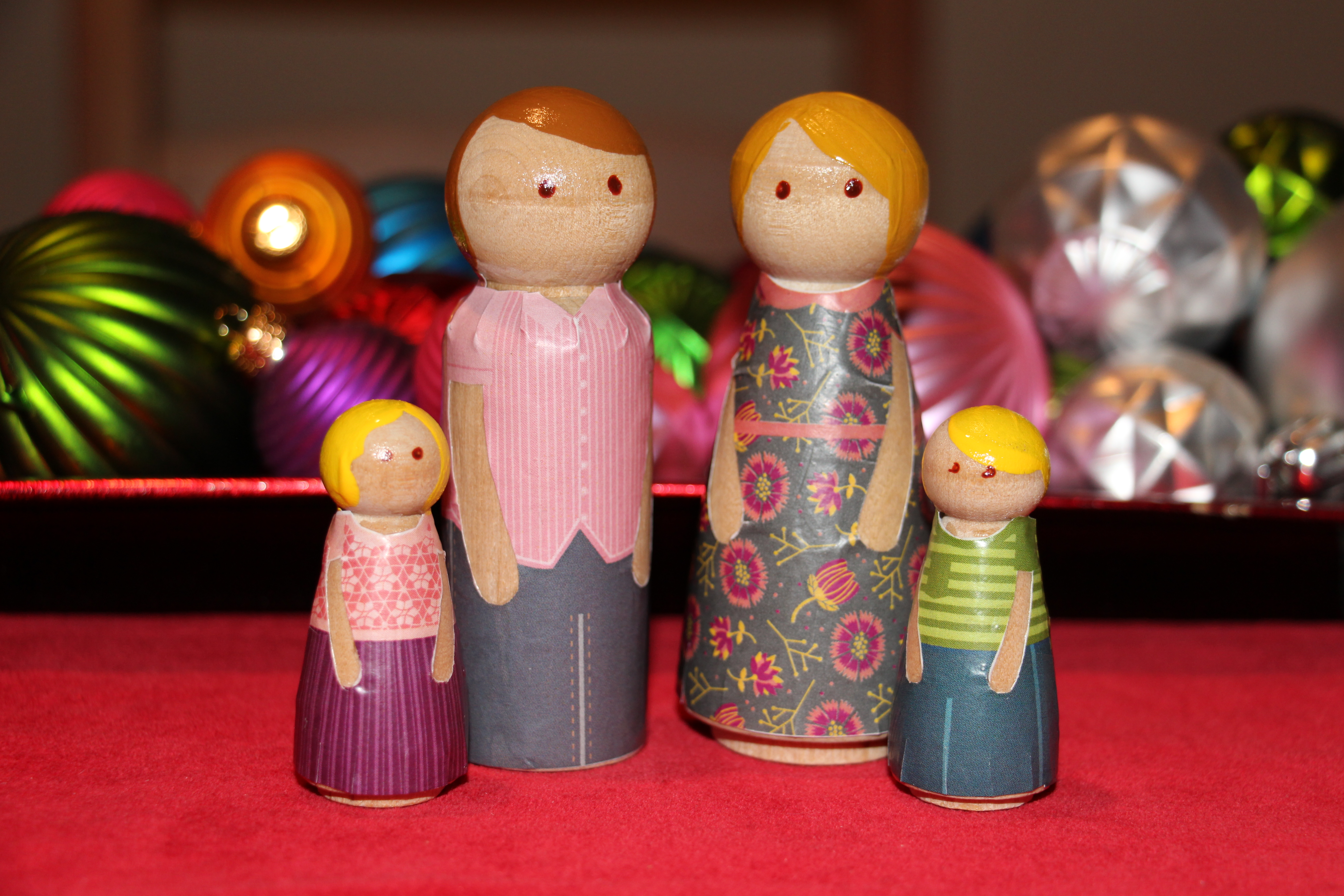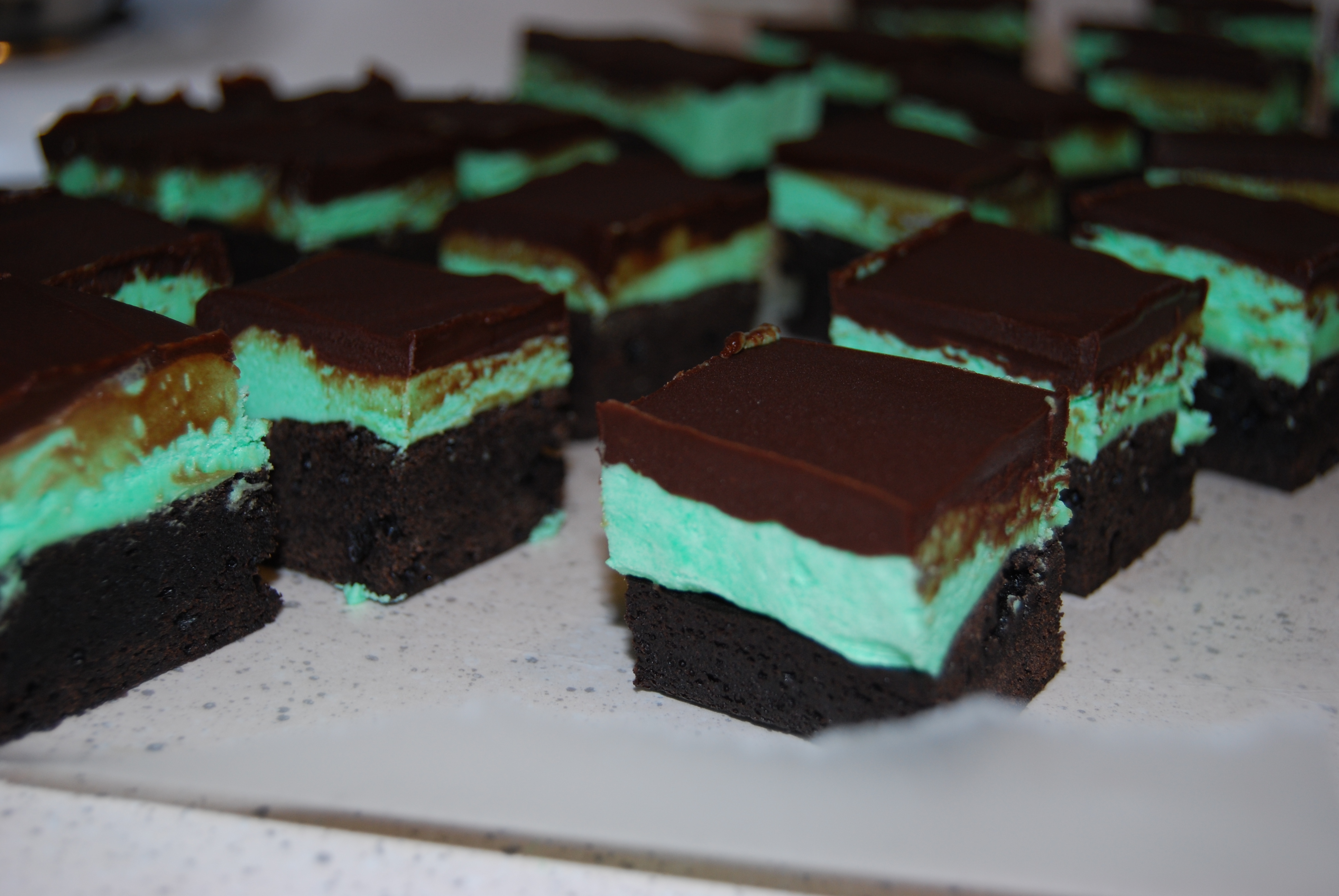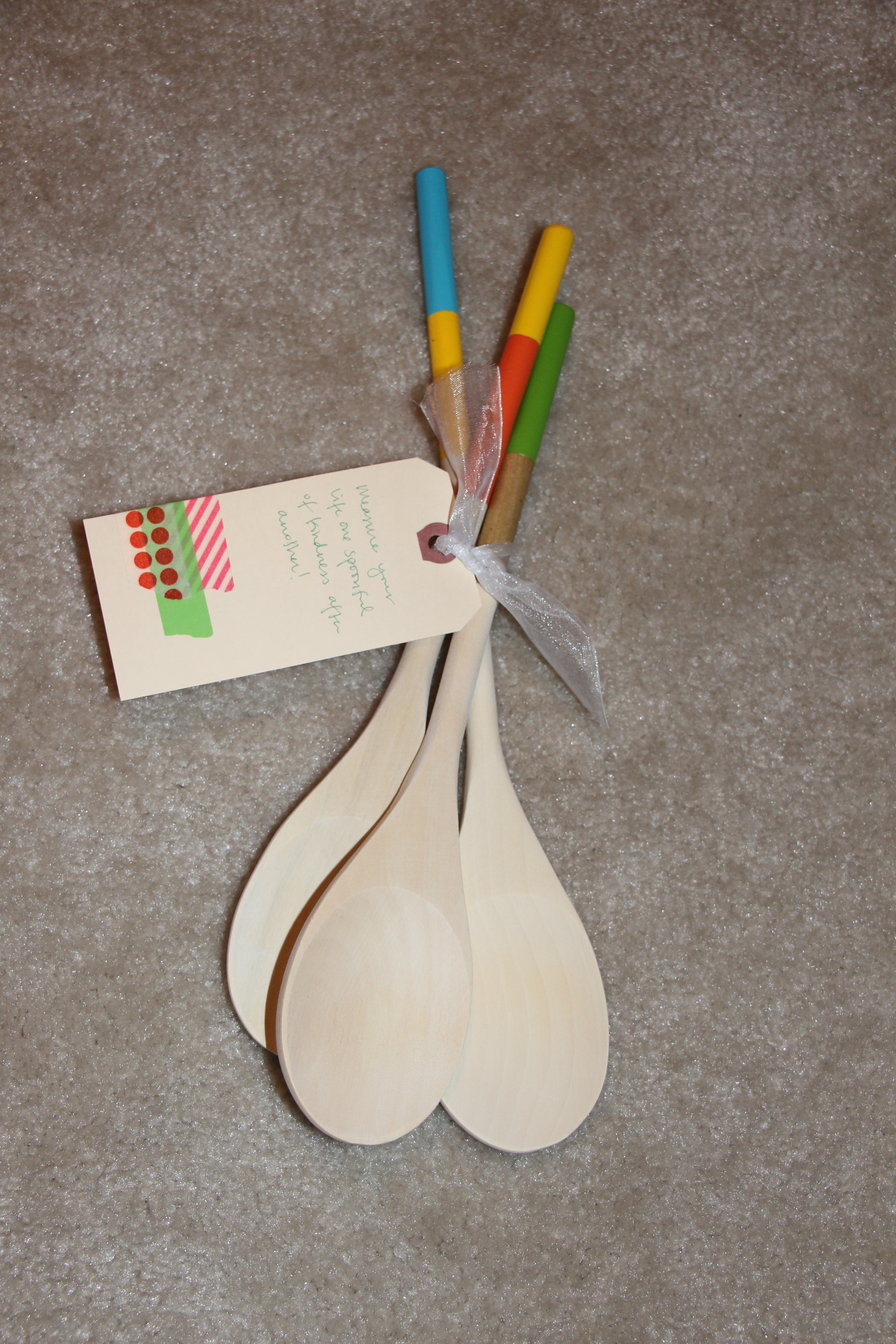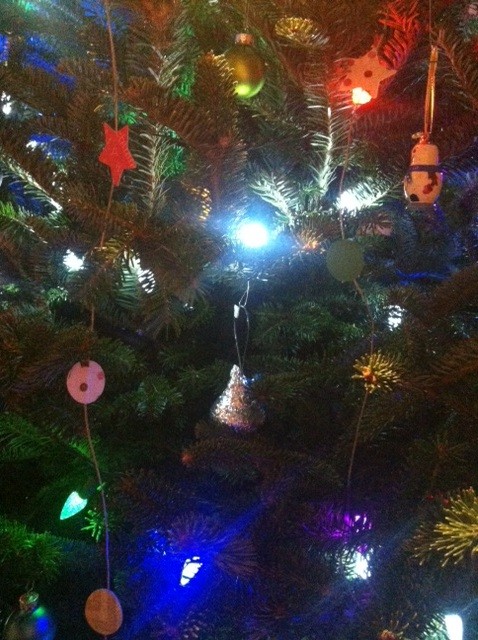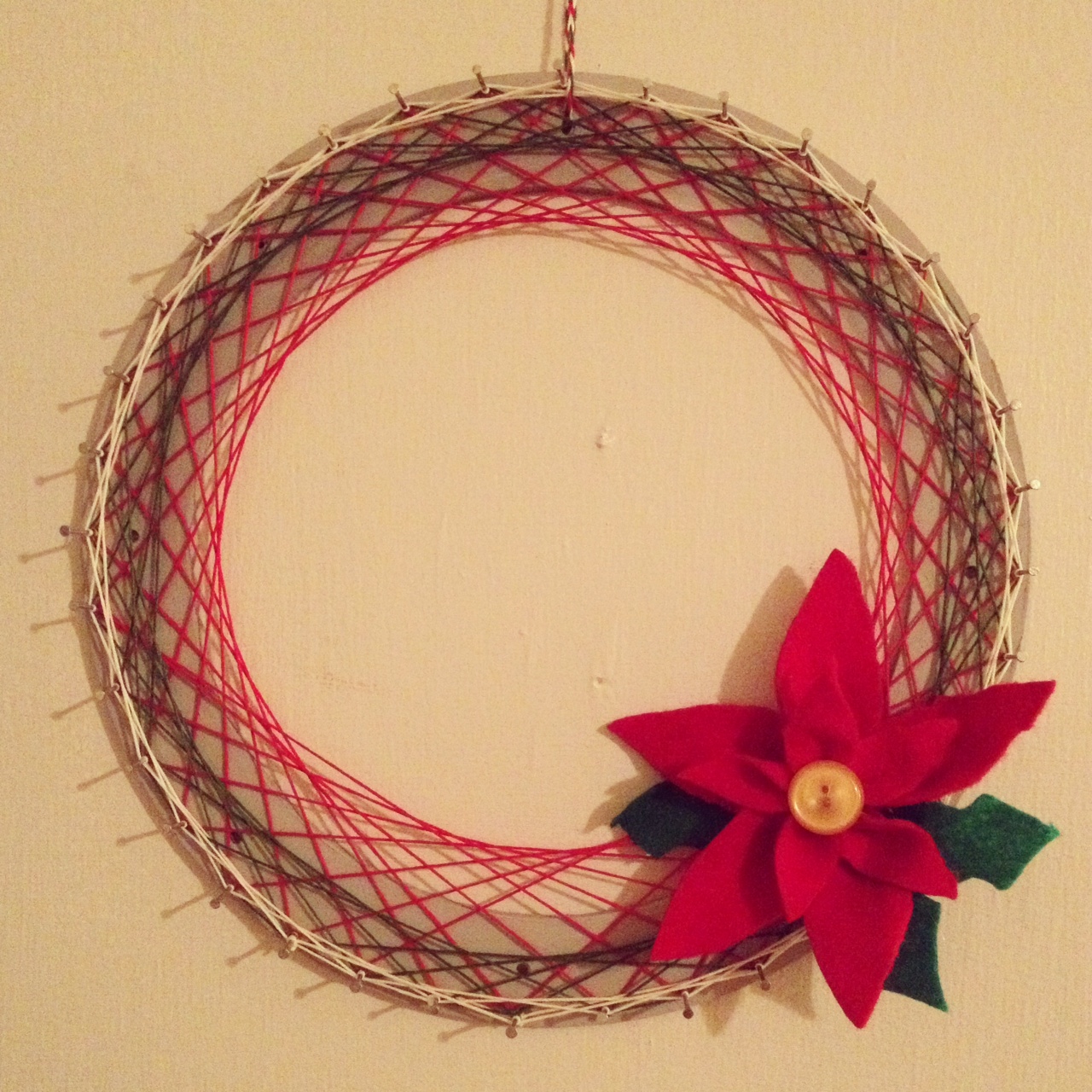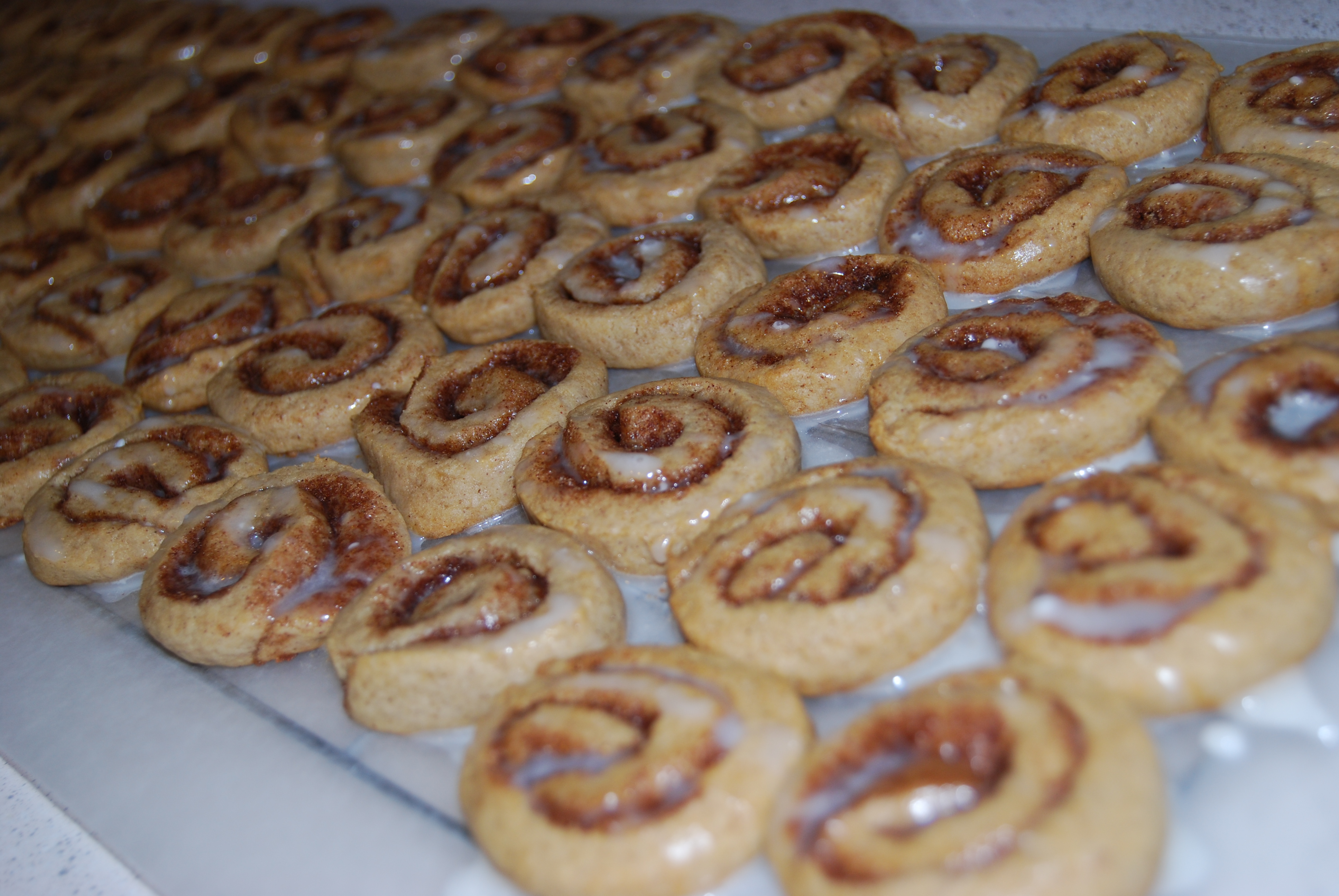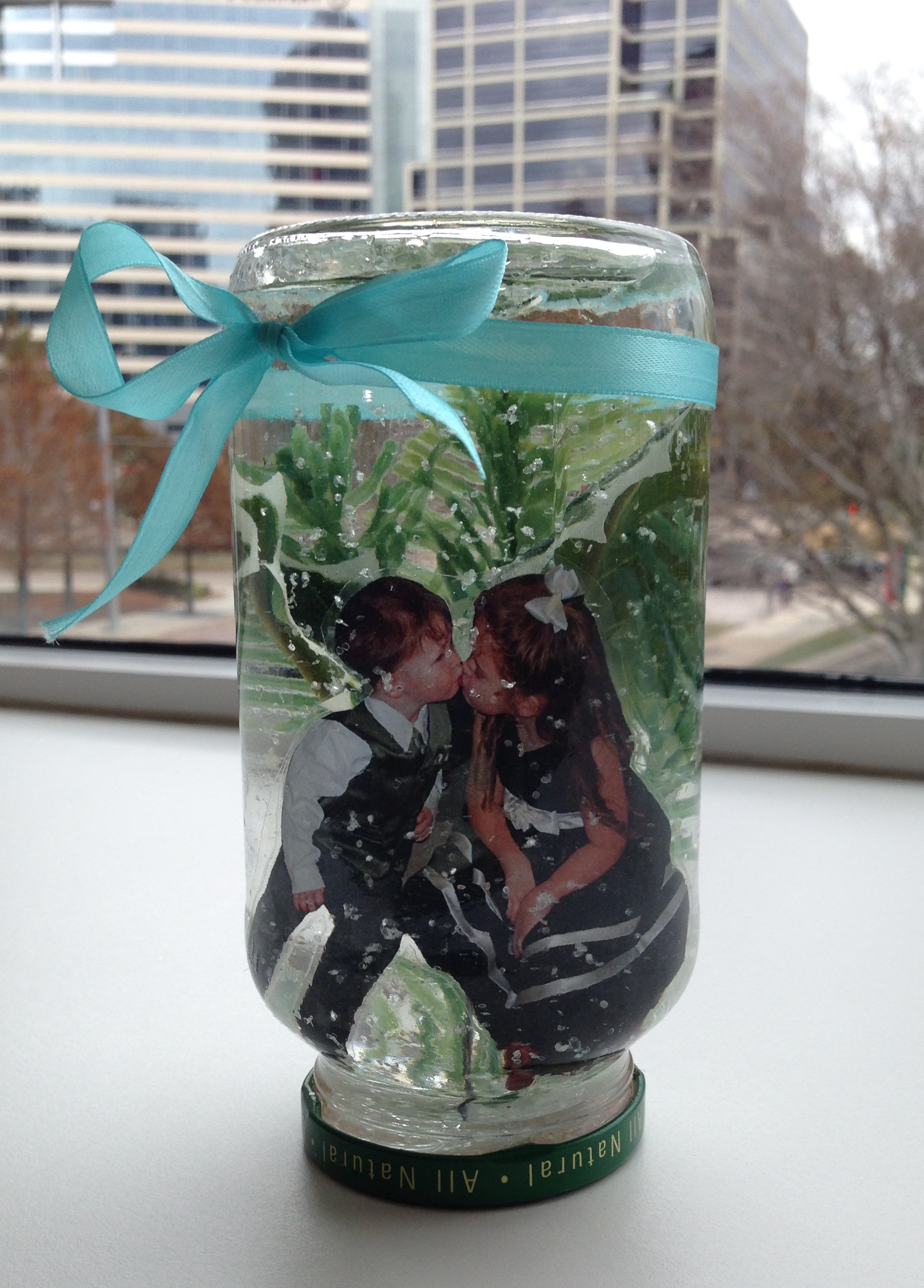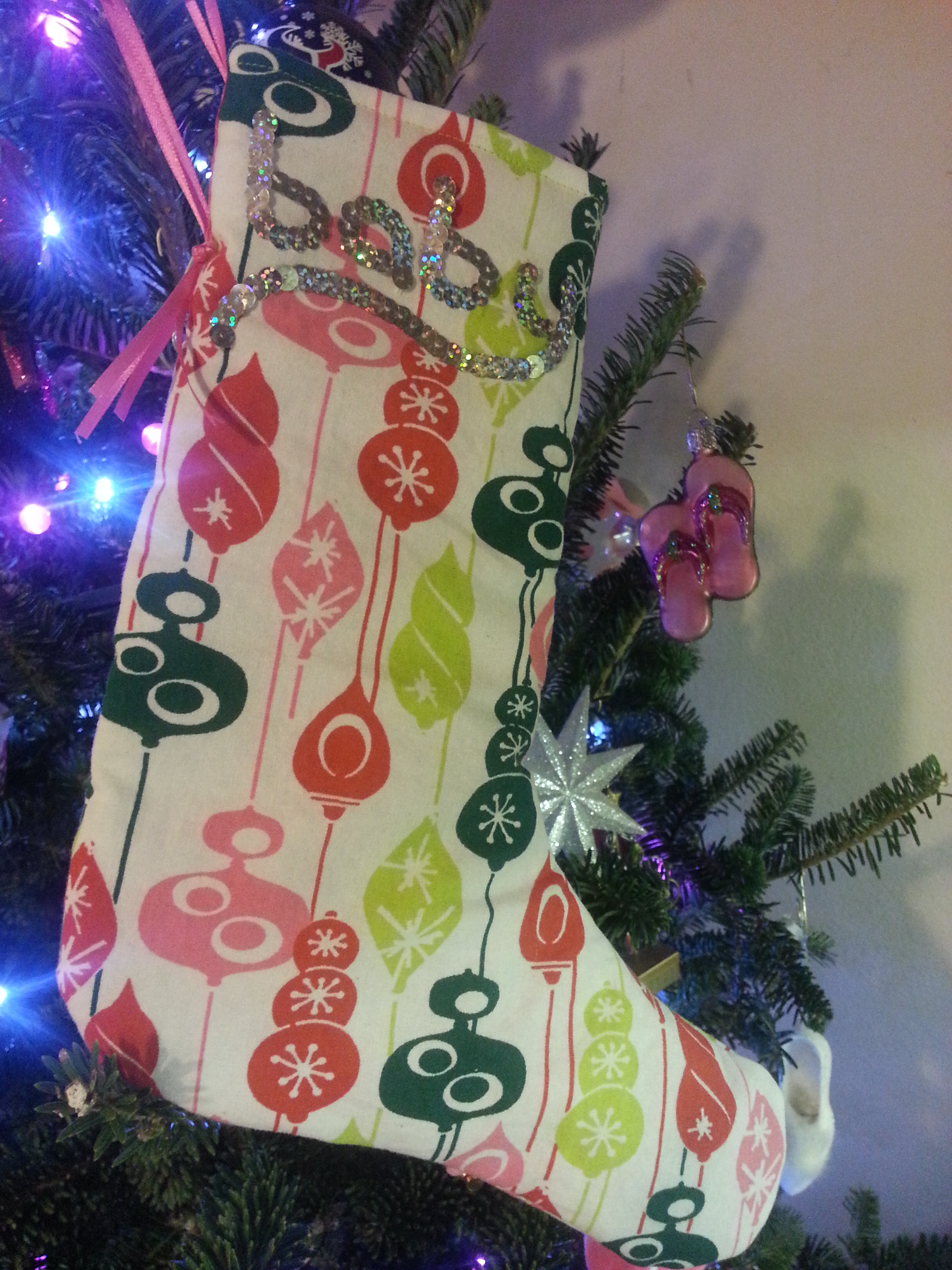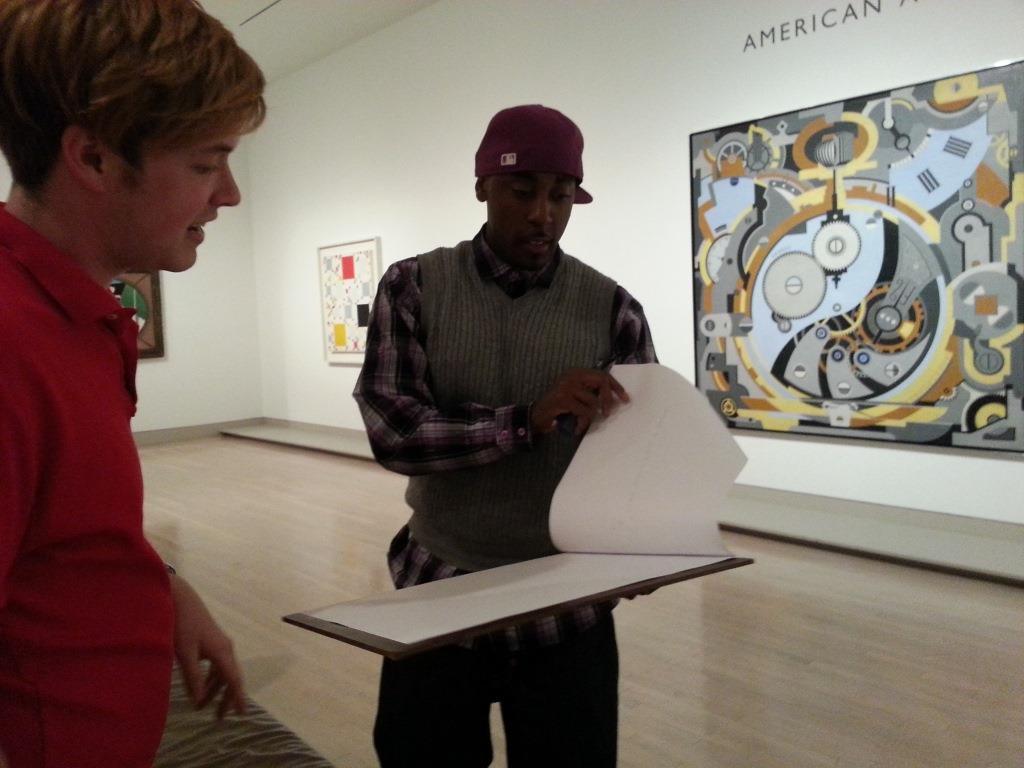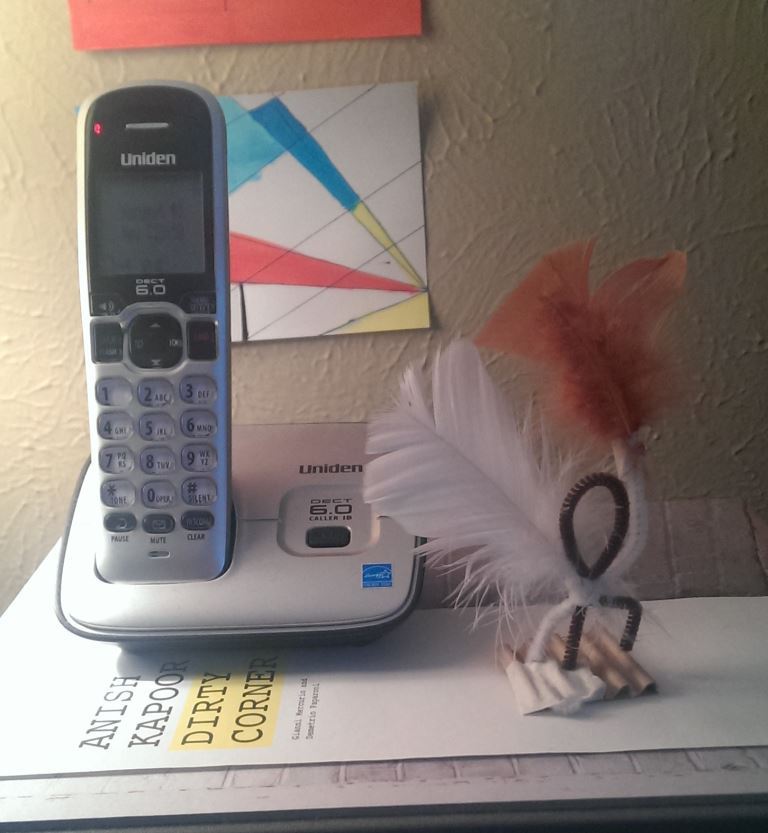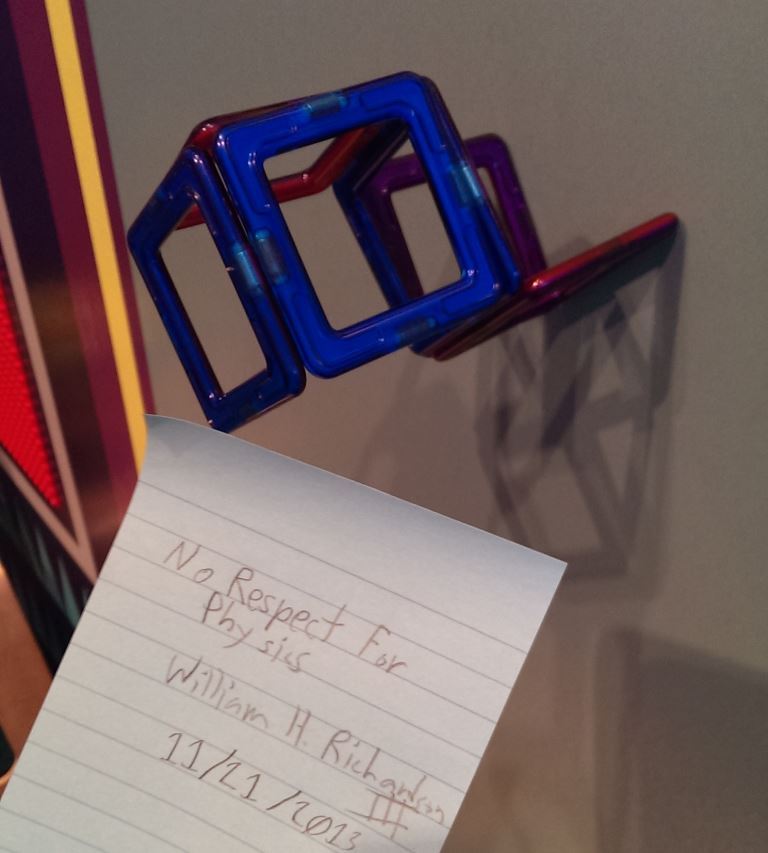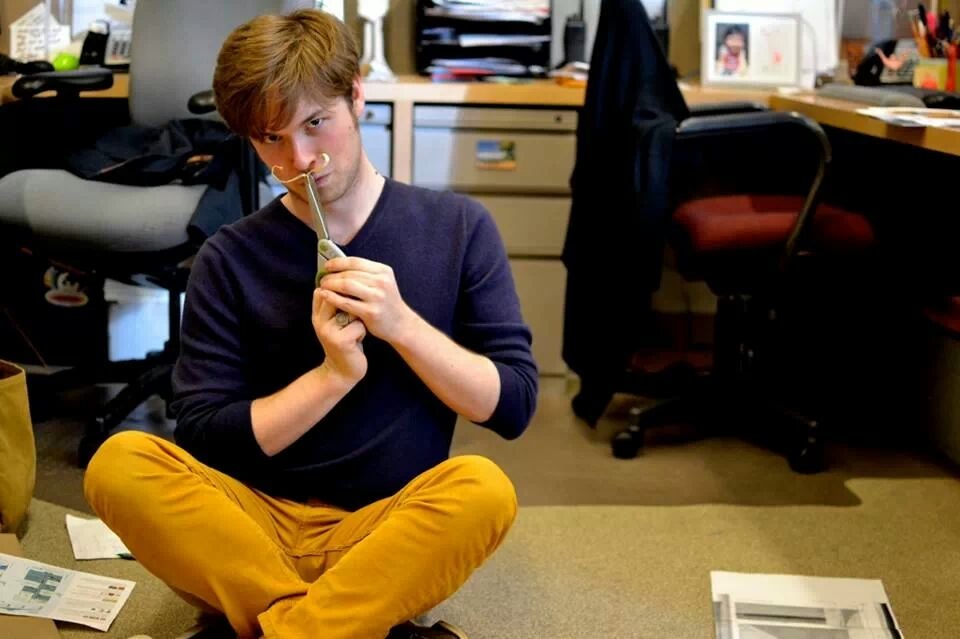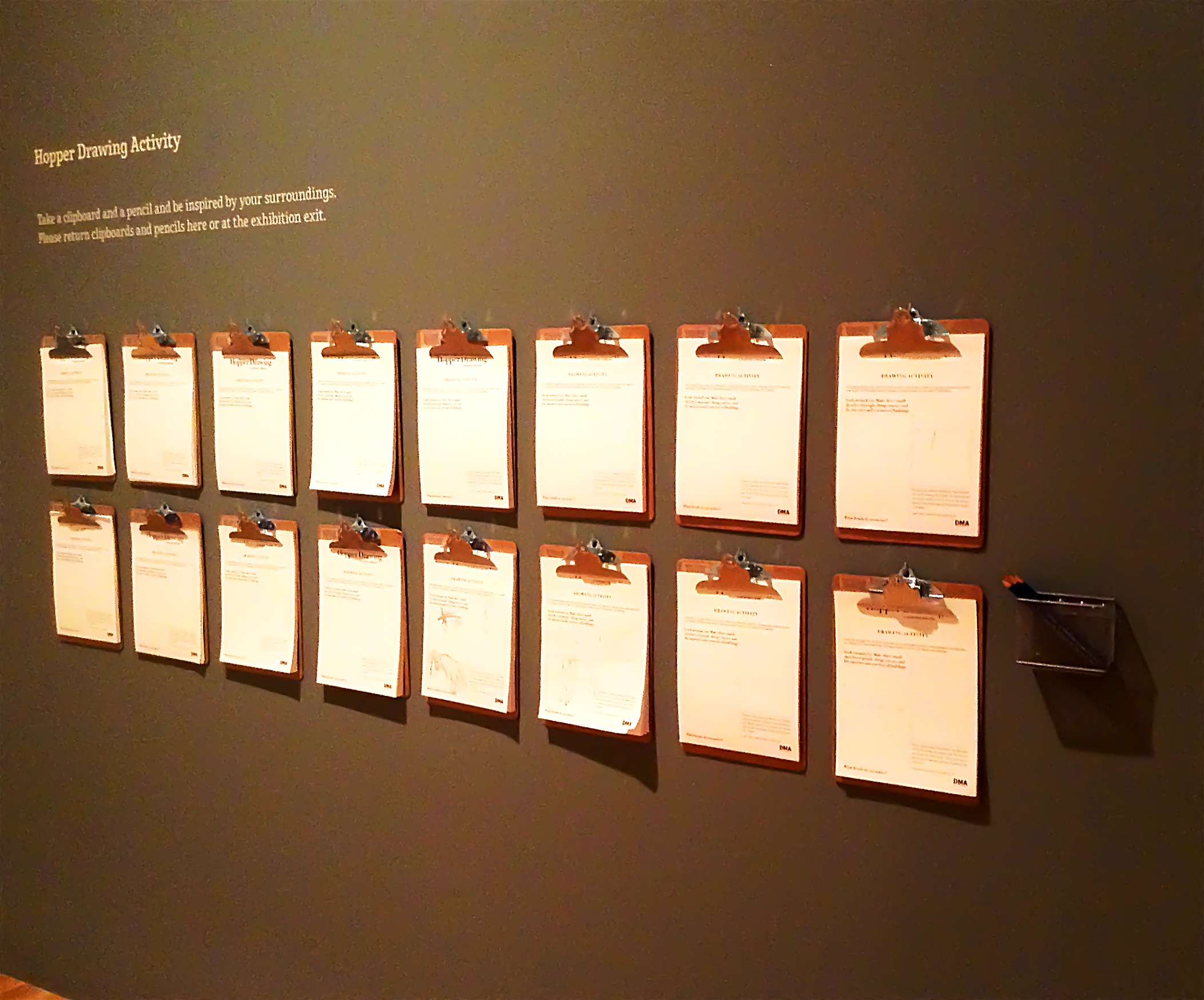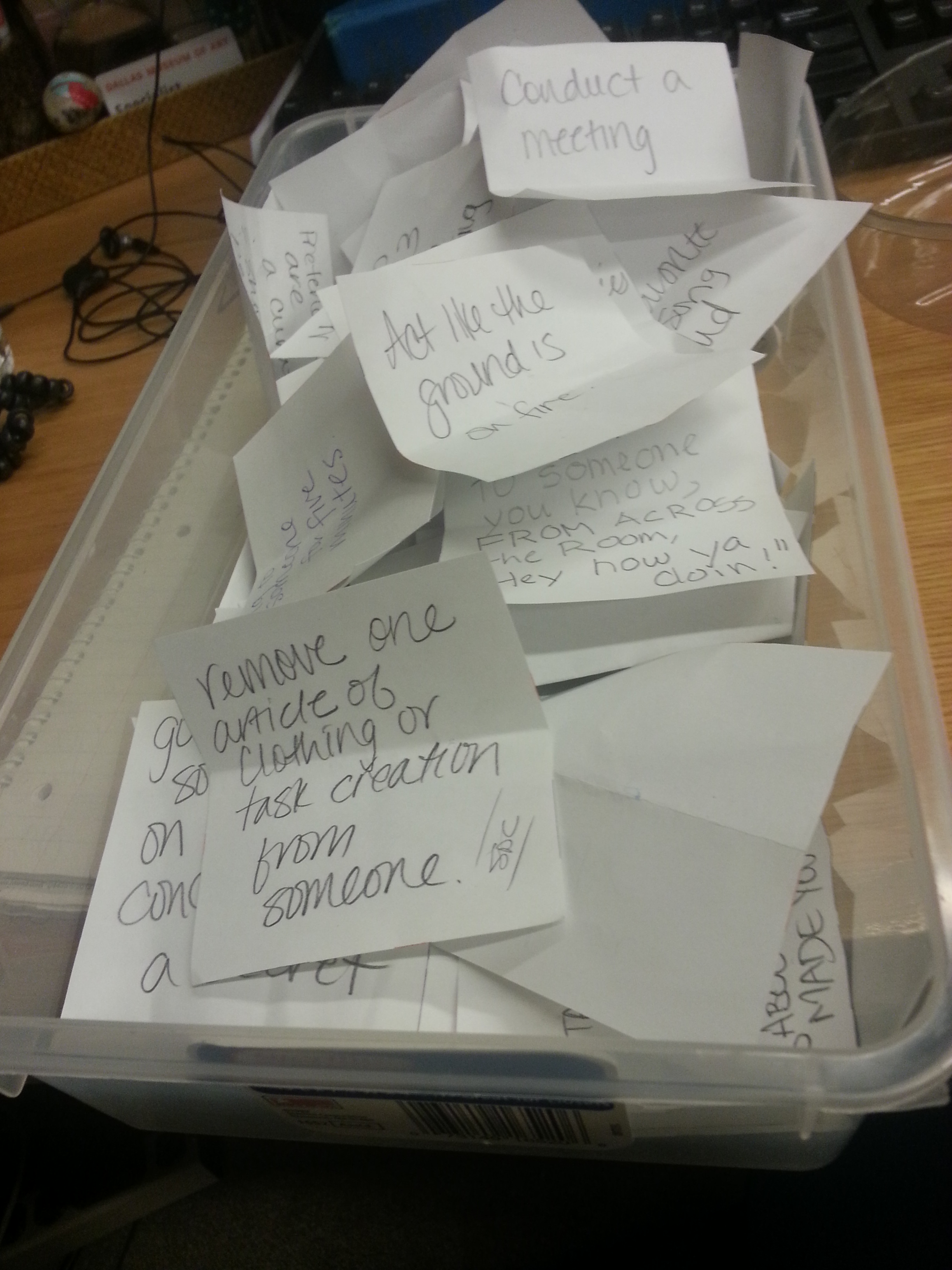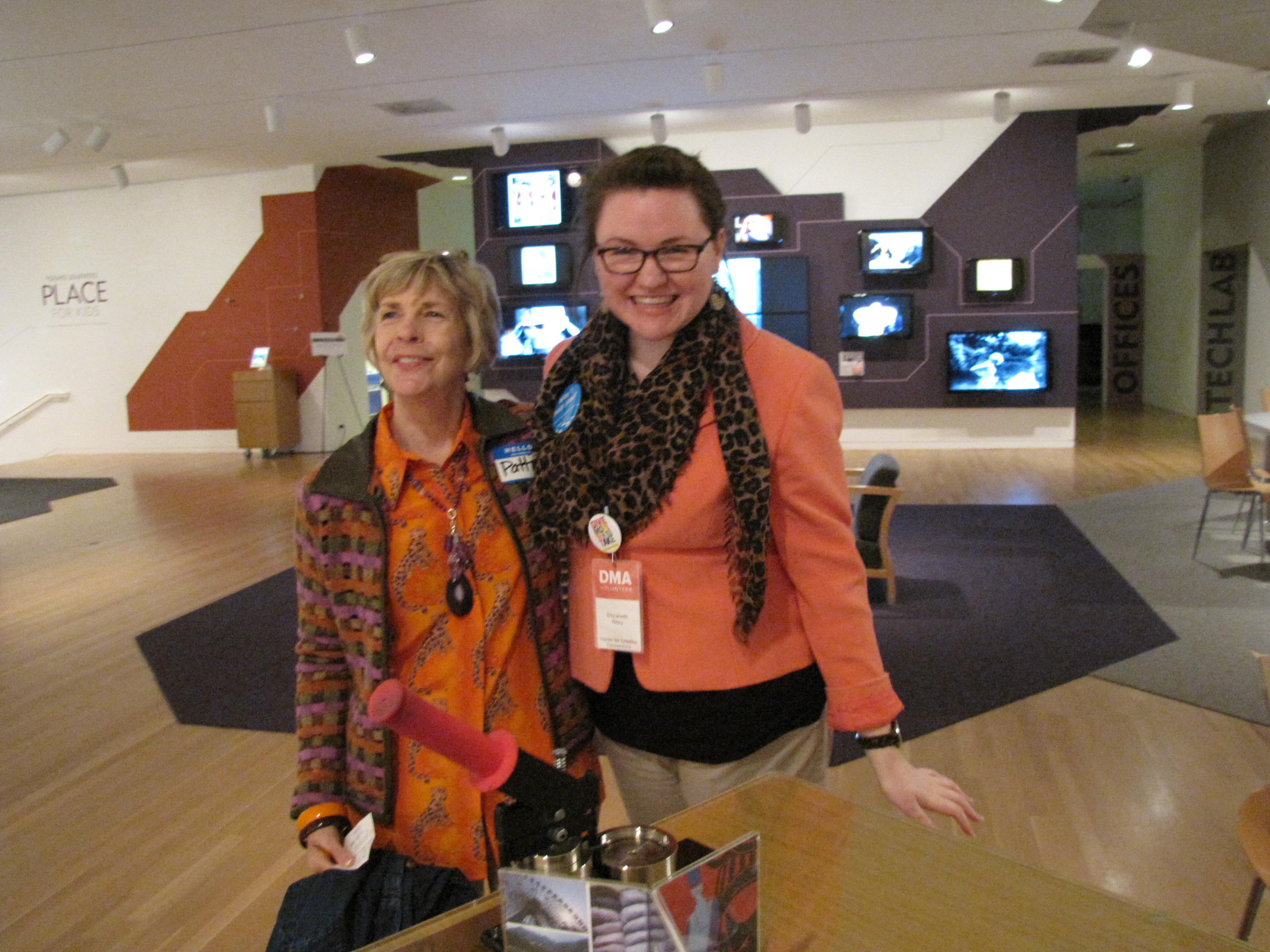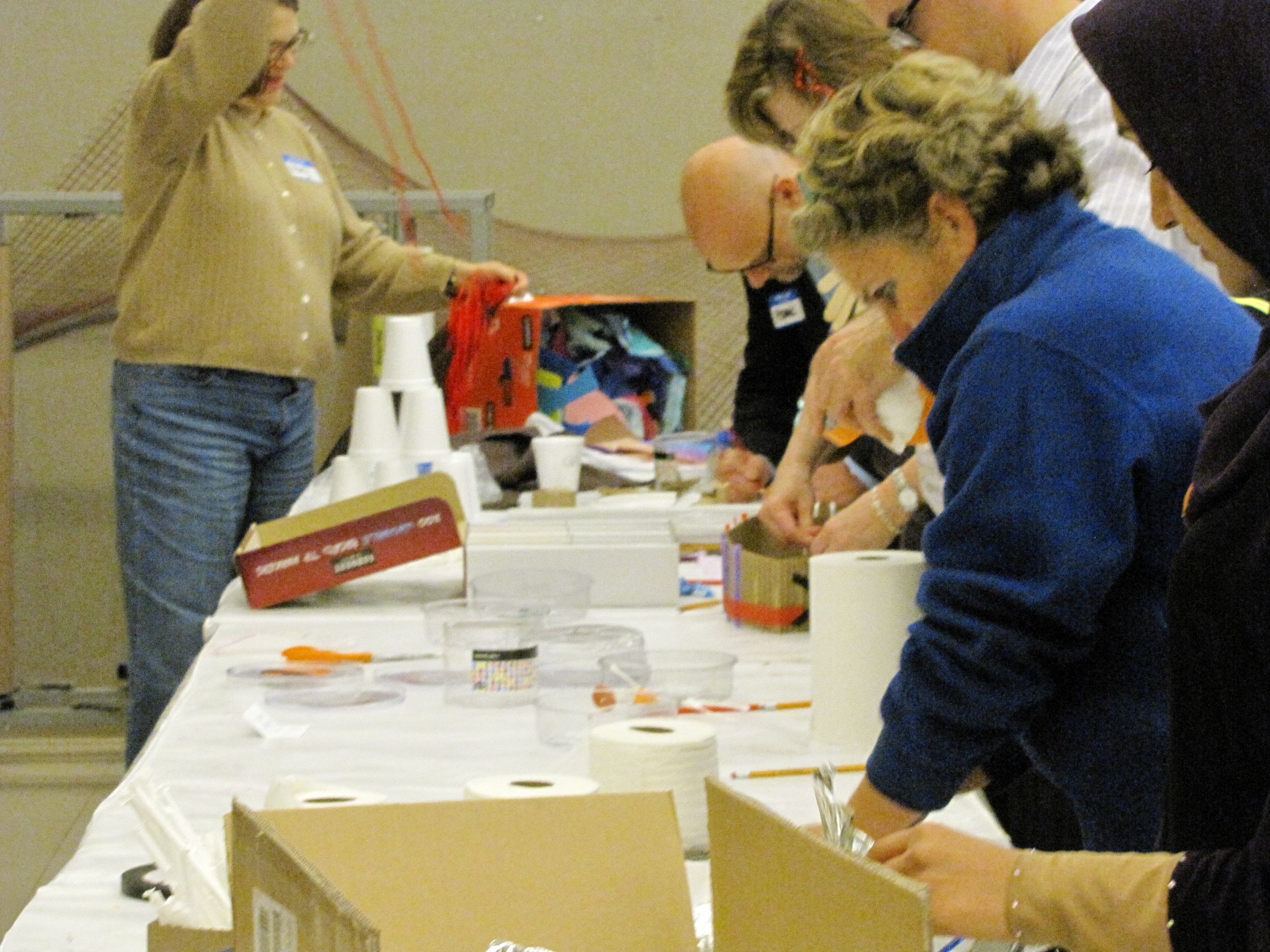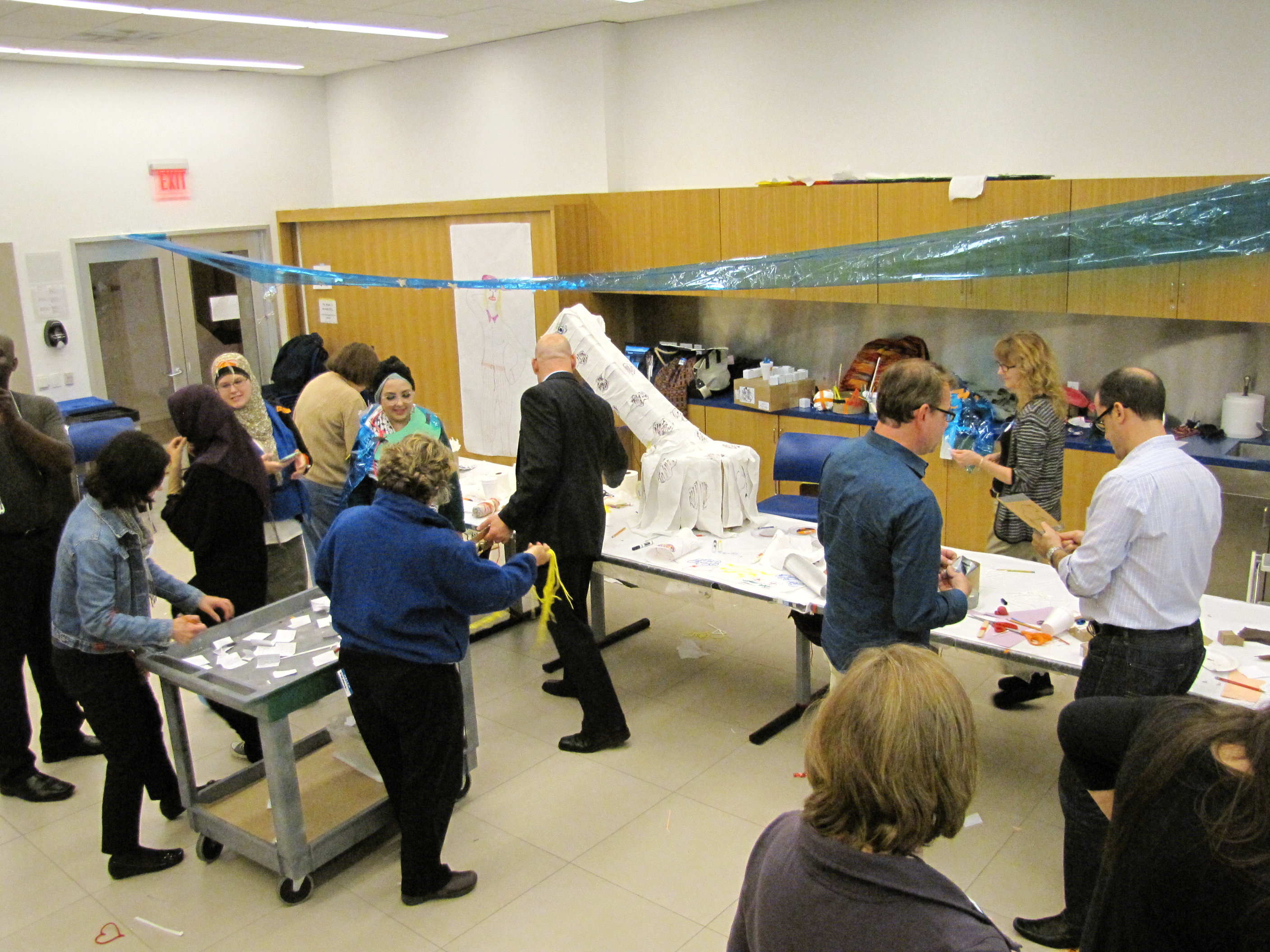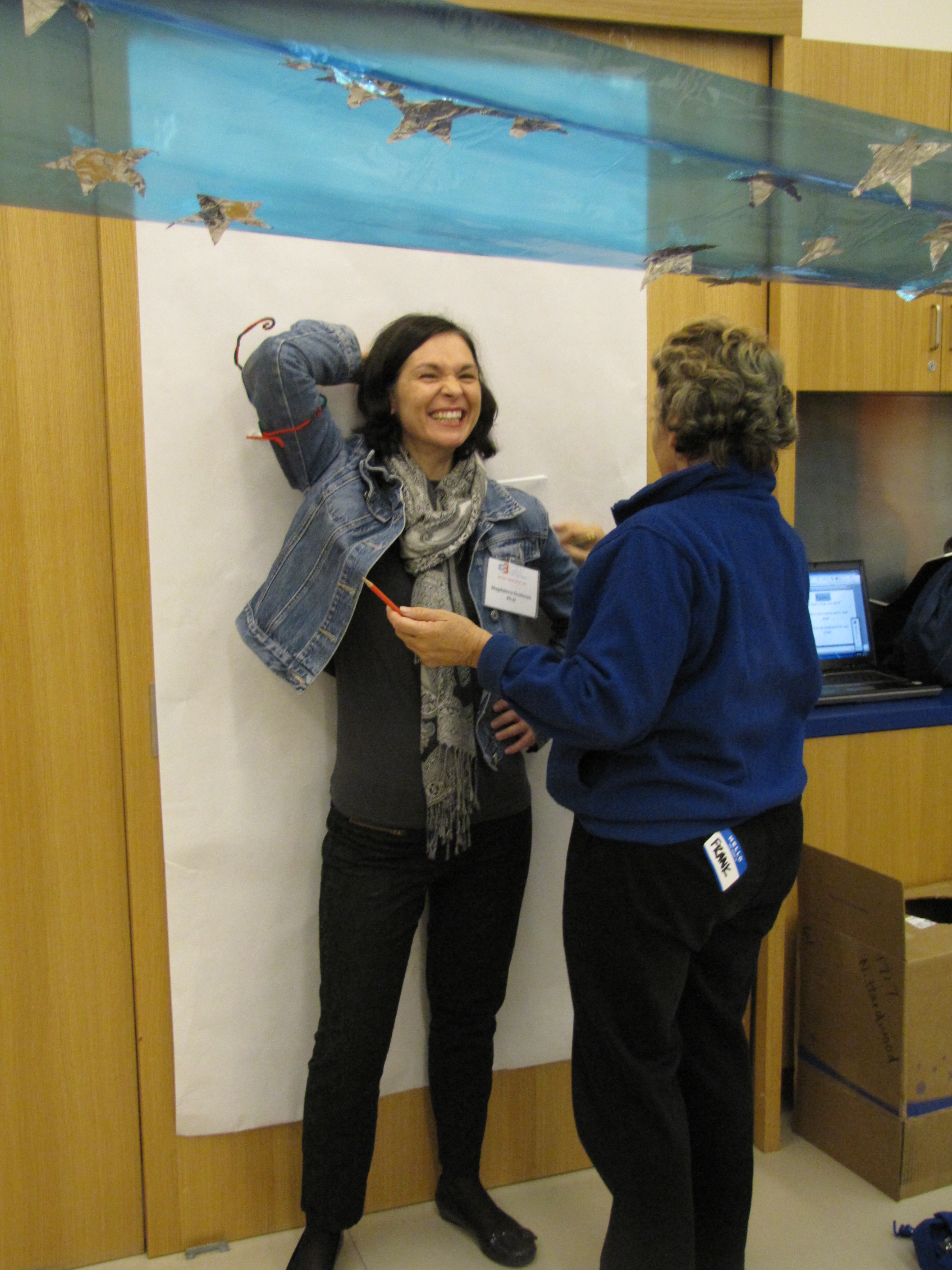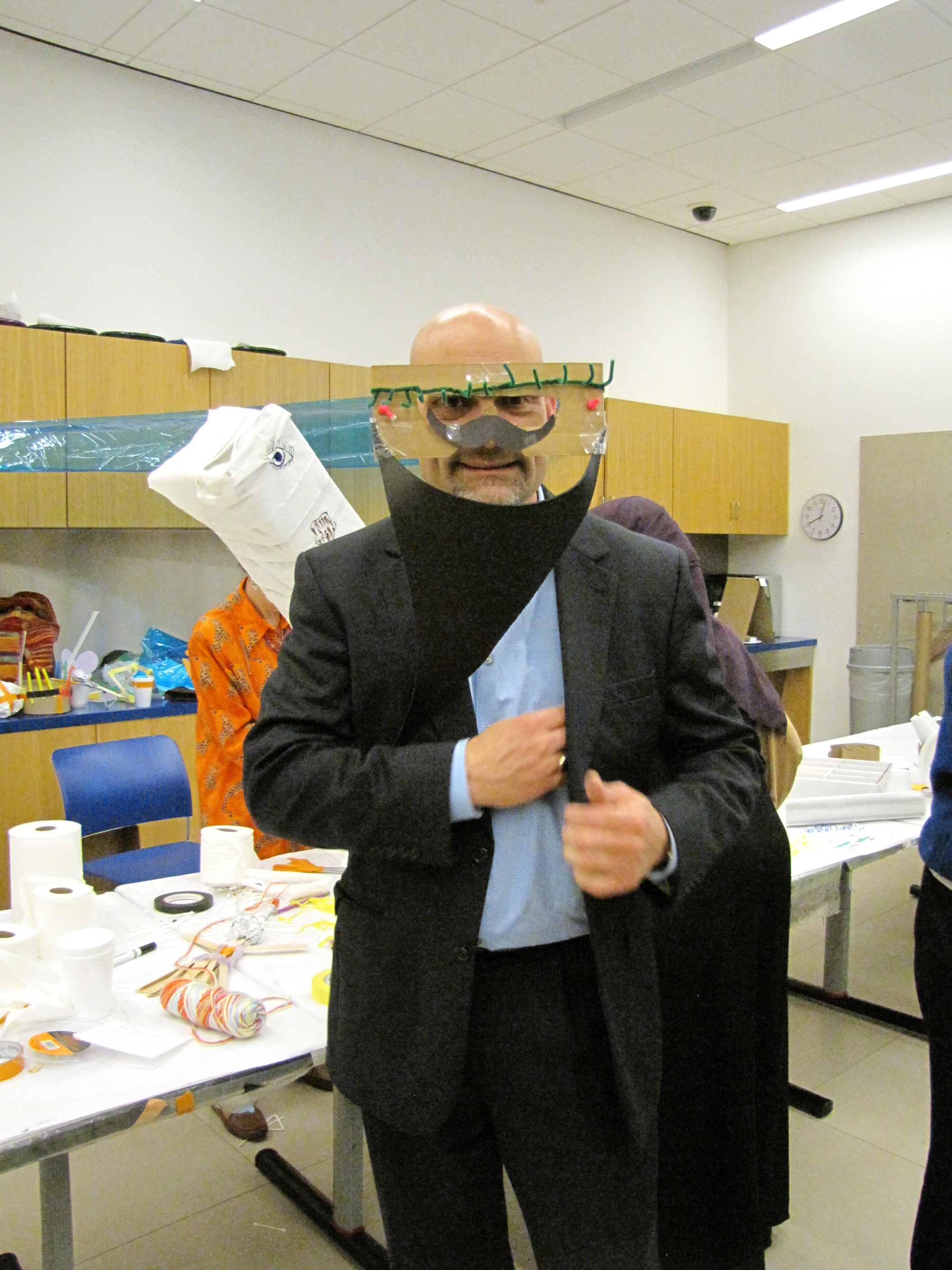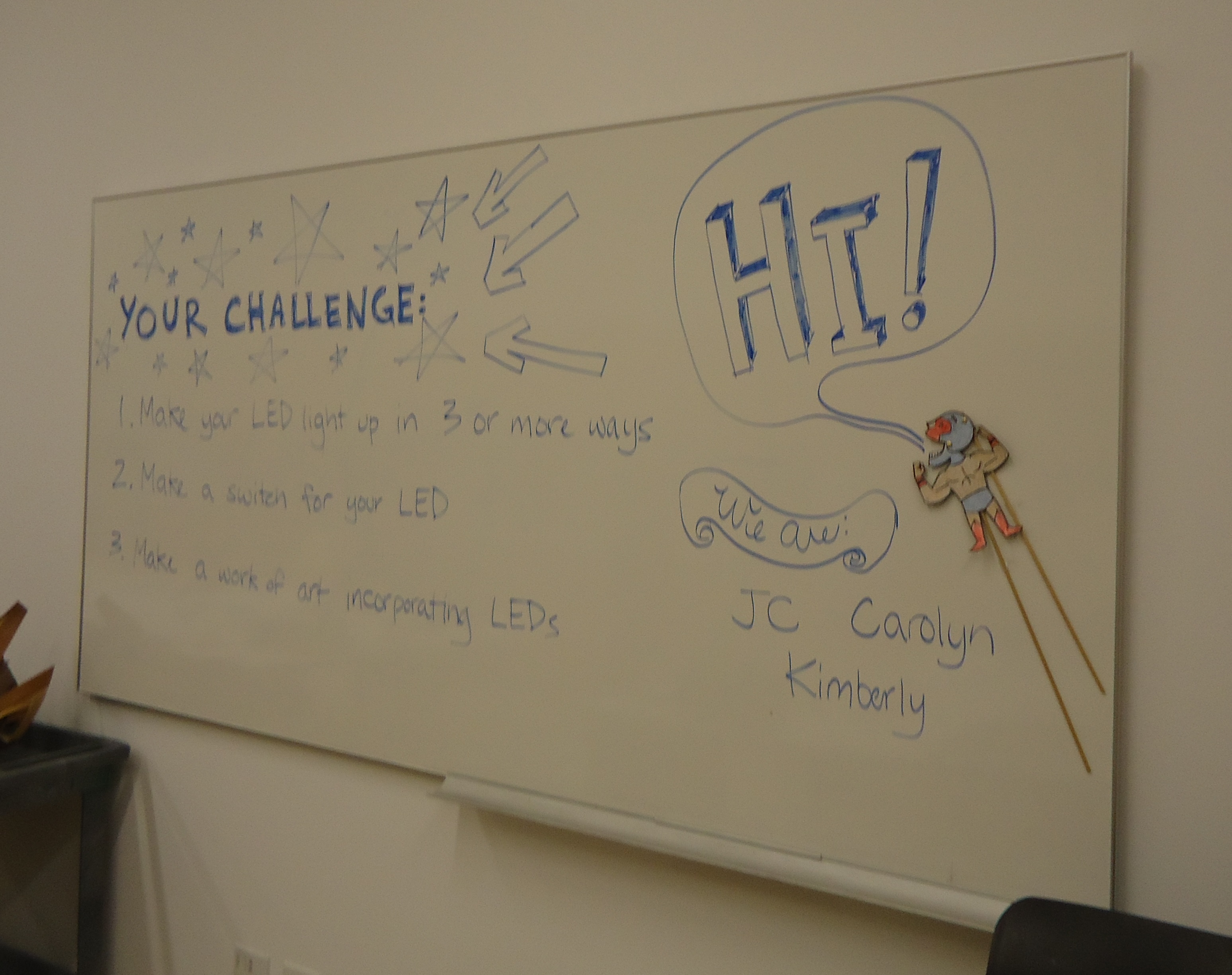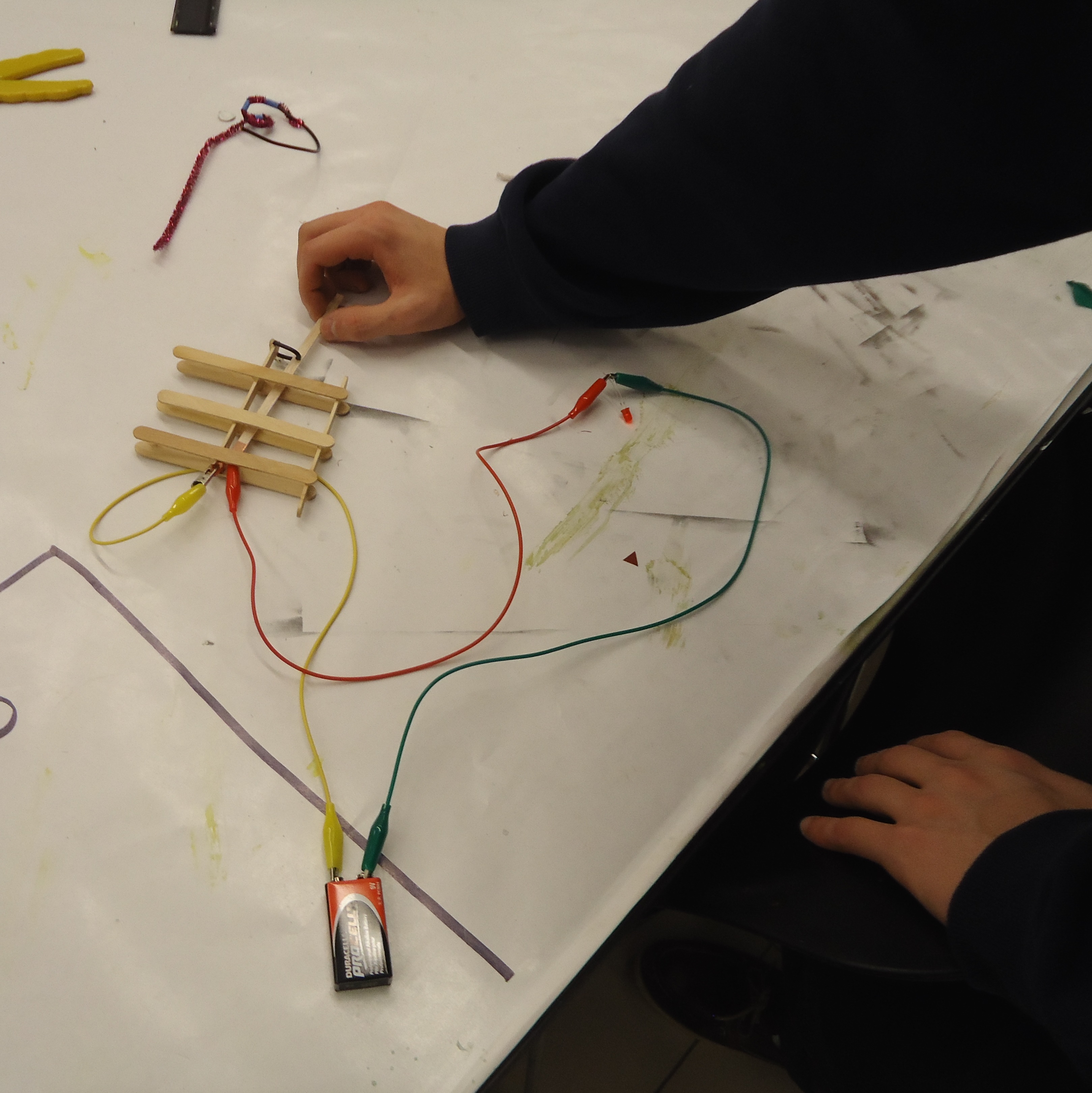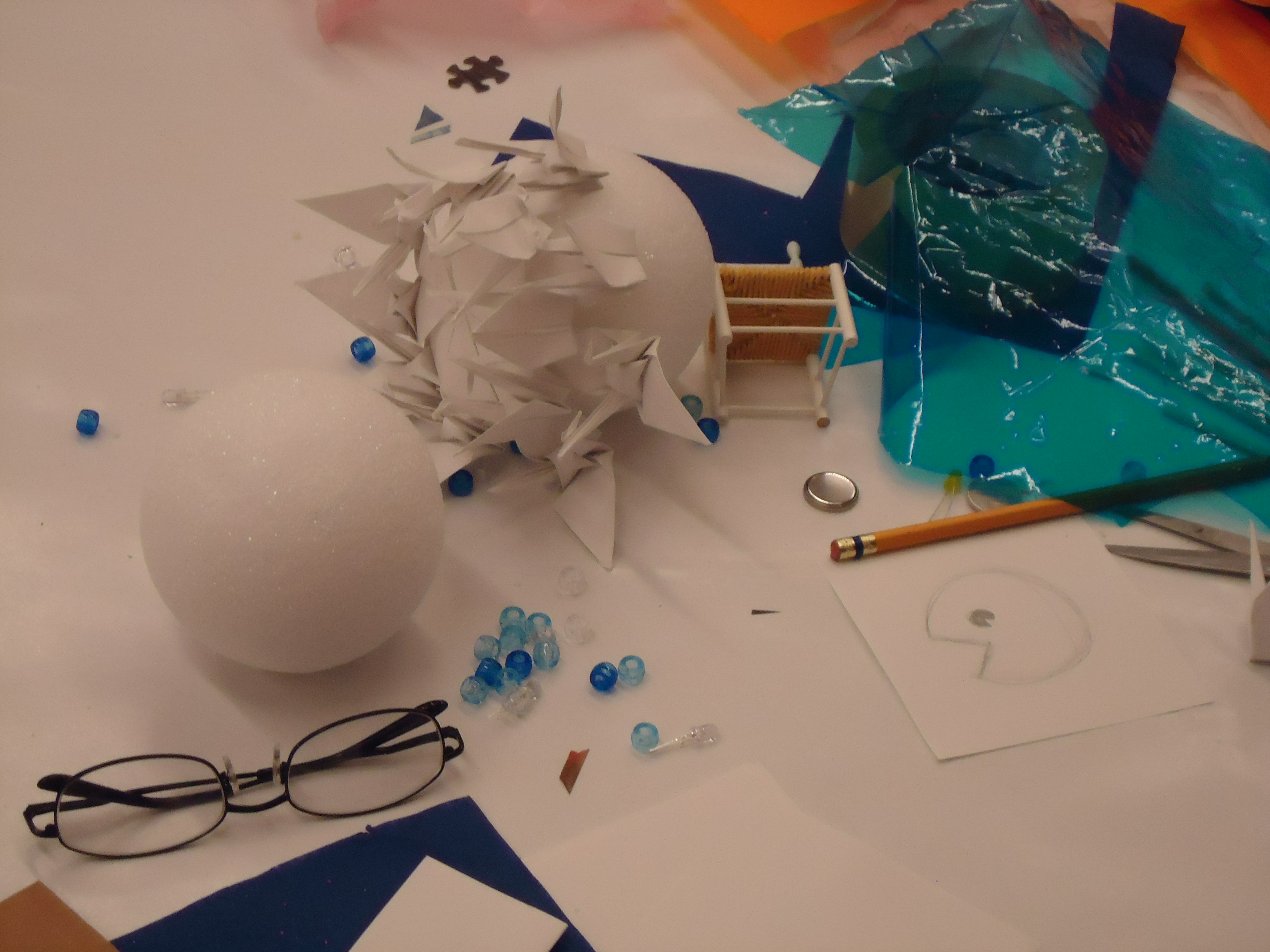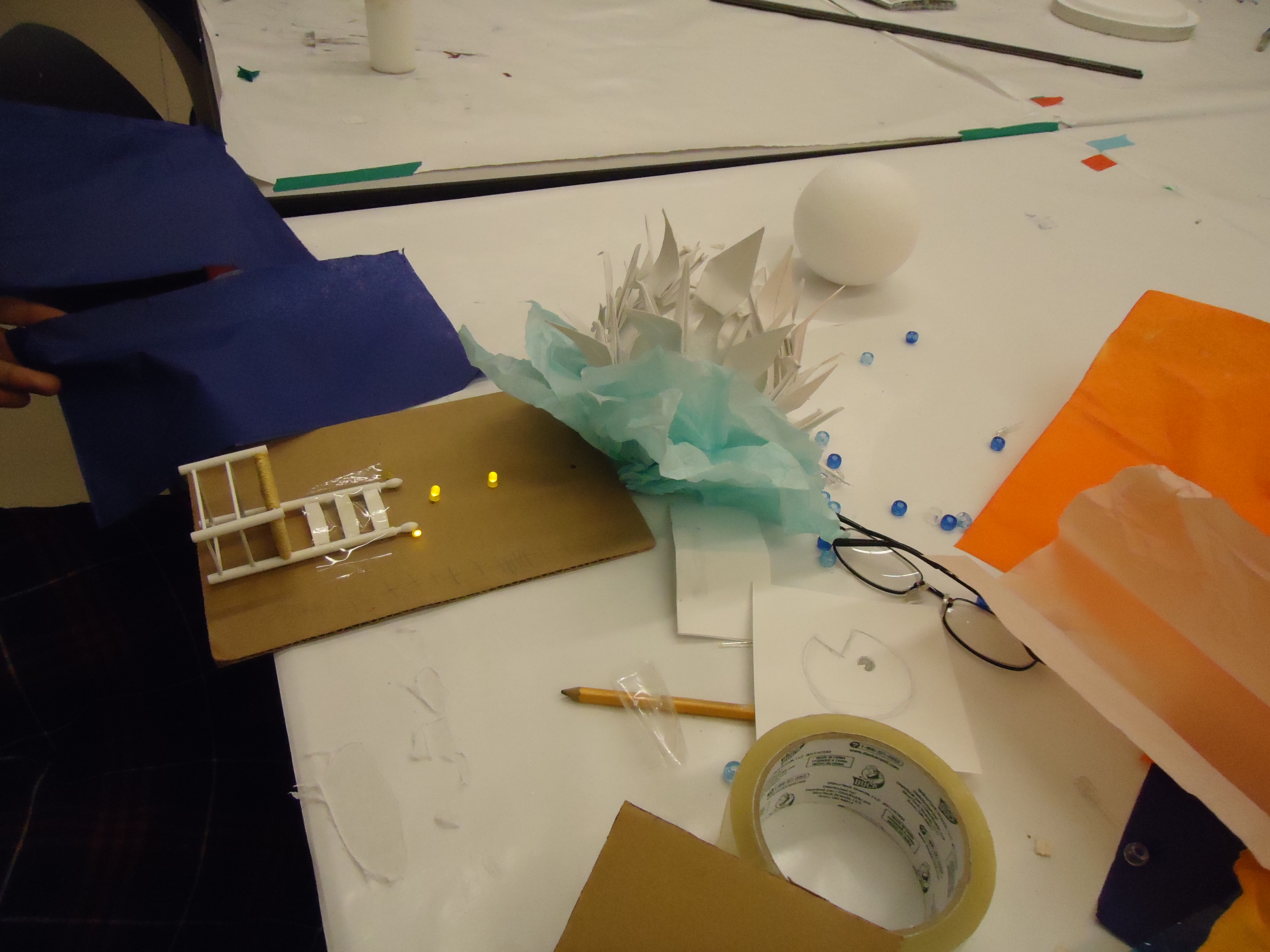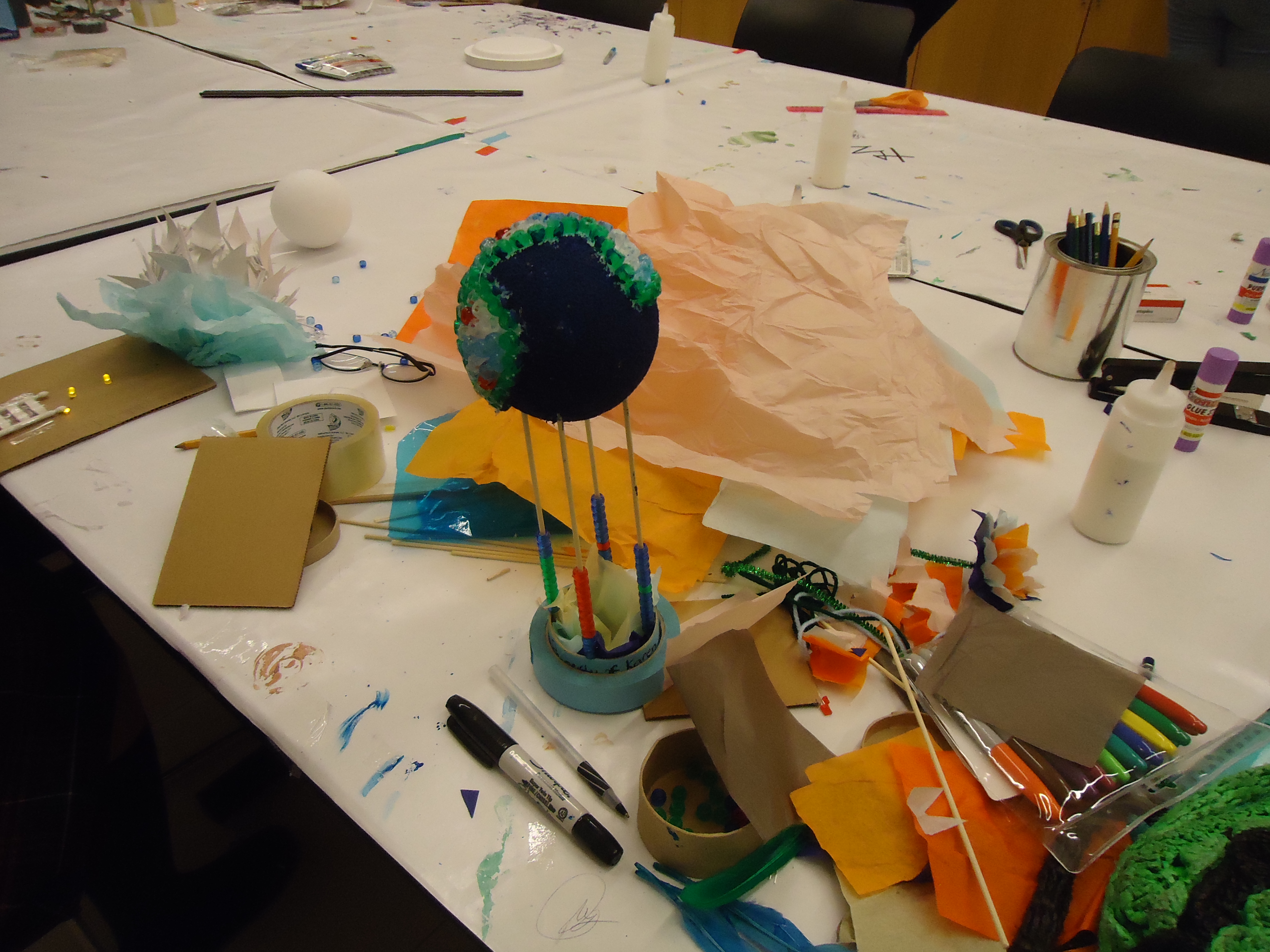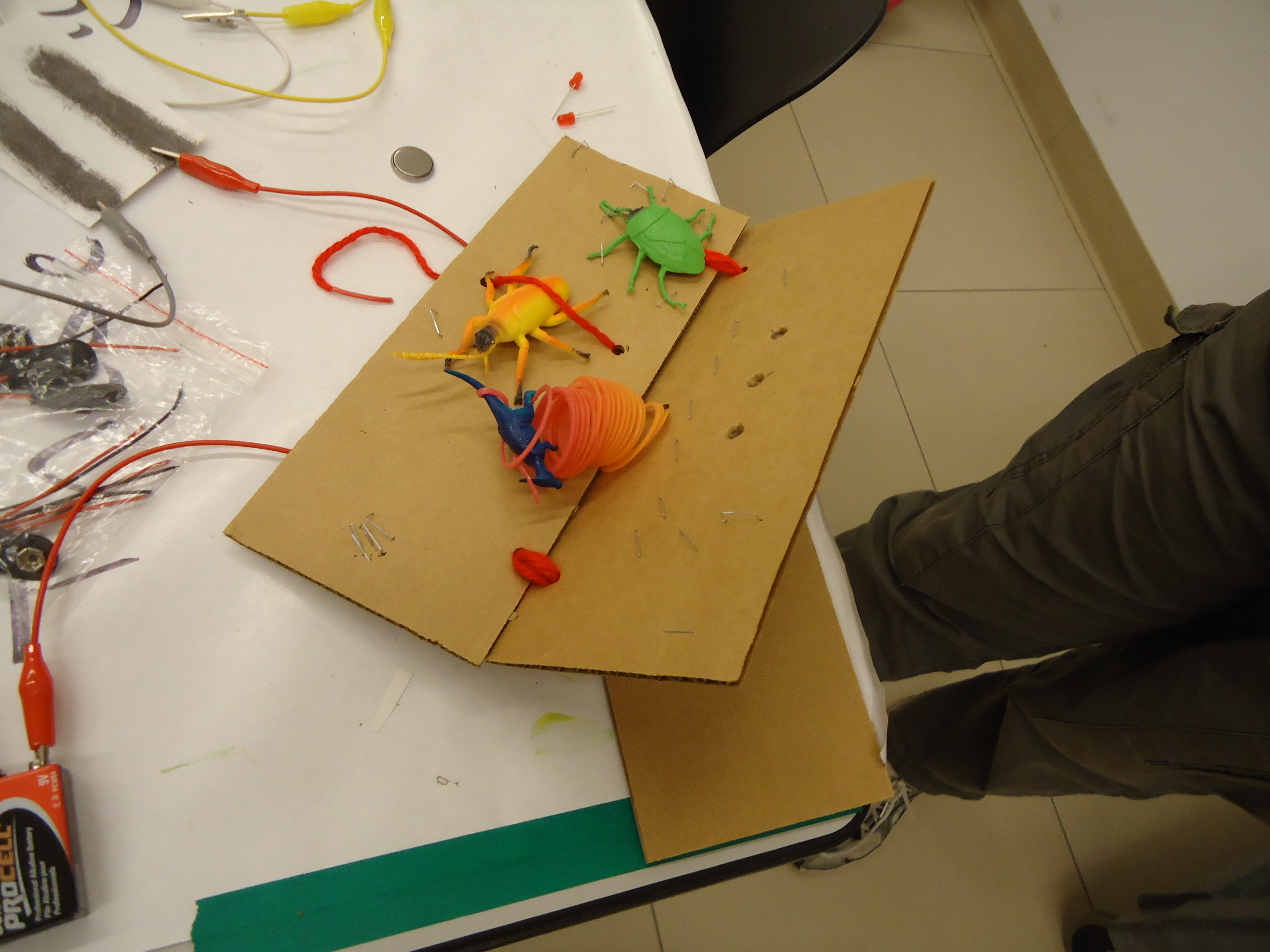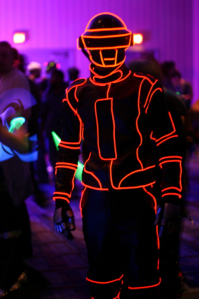As a child, I never attended sleepaway camp. My idea of summer camp was largely shaped by a few books I had read and (to be honest) the movie Dirty Dancing. So when a dear friend told me she had registered for an art camp exclusively for women, I was immediately intrigued. Once I looked at the Lucky Star Art Camp website, it didn’t take long for me to follow suit. The camp promised five days of creative workshops, nightly guest speakers, and a gaggle of like-minded women, all during the best weather of the year in the most beautiful area of Texas (in my opinion).
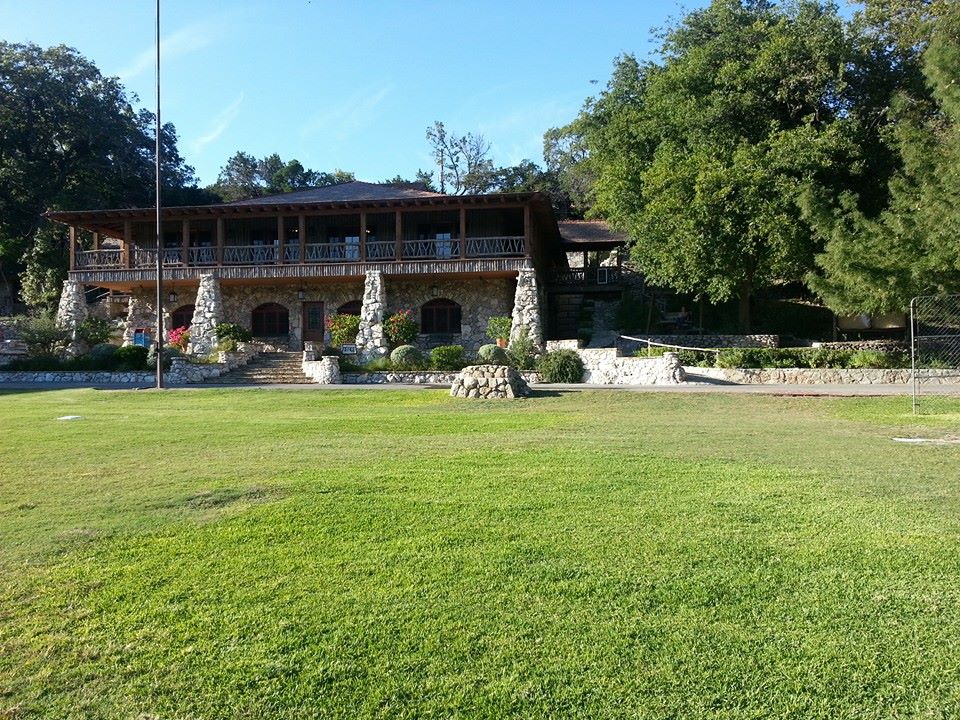
Camp Waldemar
Lucky Star offered a wide array of workshops you might expect at an art camp: painting, creative writing, photography, and jewelry-making. It also offered sessions on cheese-making, canning and preserving, and yoga. My personal background is in art history rather than studio art, but I do love to make things and would practice yoga every day if I could. This led me to sign up for activities that I would do more often if I had the time: a sewing class, a jewelry class, an art and yoga class, and a creativity free-for-all workshop.
In the days (and hours) leading up to camp, I will admit I had a few doubts. It’s funny, even as an adult I’m pretty sure I experienced some of the same fears and concerns I would have felt as a child: Will our cabins and beds be clean and comfortable? Will I be eating “camp” food, like hot dogs, all week long? And, perhaps most scary, will I like my classes and make friends with the other campers, roughly seventy-five in all?
Pretty much all of my concerns were dispelled within the first few hours of arrival. I can emphatically and ecstatically say that Lucky Star far exceeded ALL of my expectations. First question: Will our cabins and beds be clean and comfortable? Here are a few views of the gorgeous Camp Waldemar, which hosted Lucky Star.
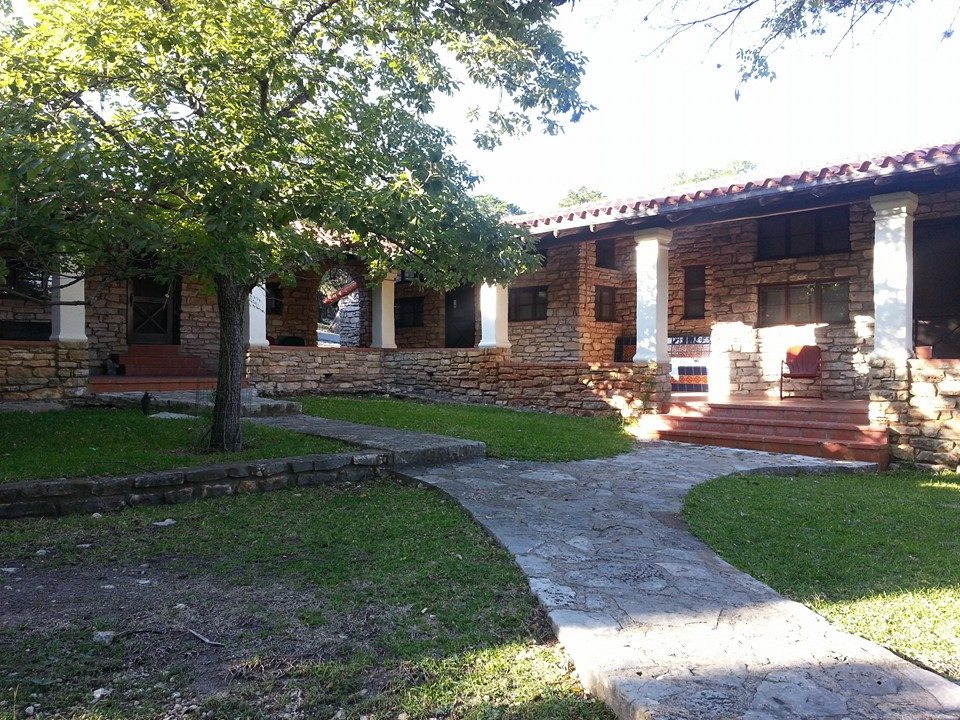
Cabin exterior
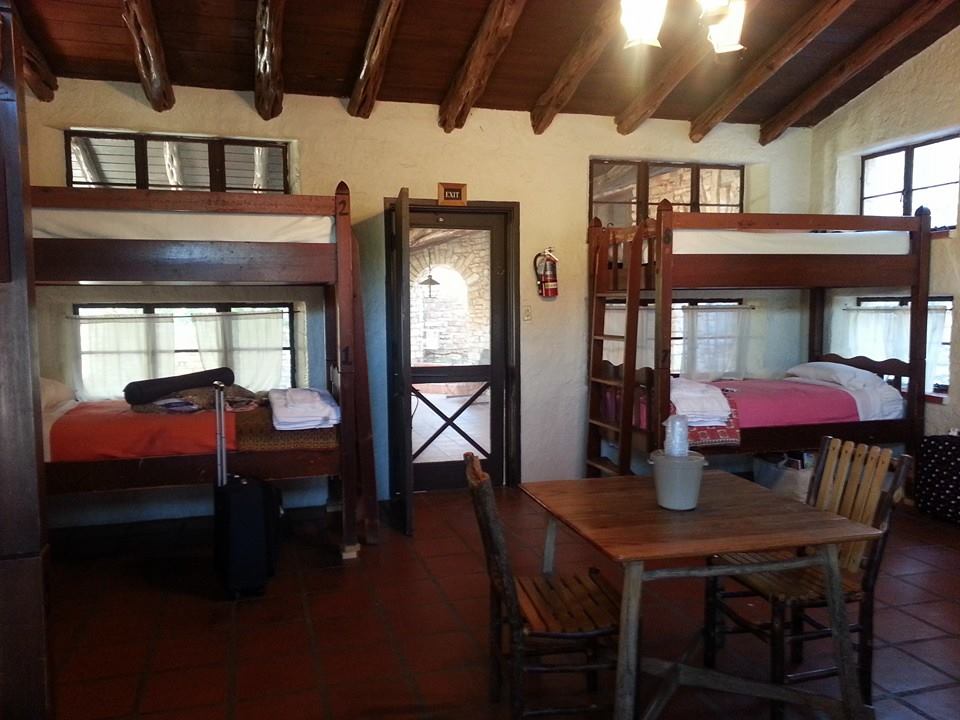
Cabin interior
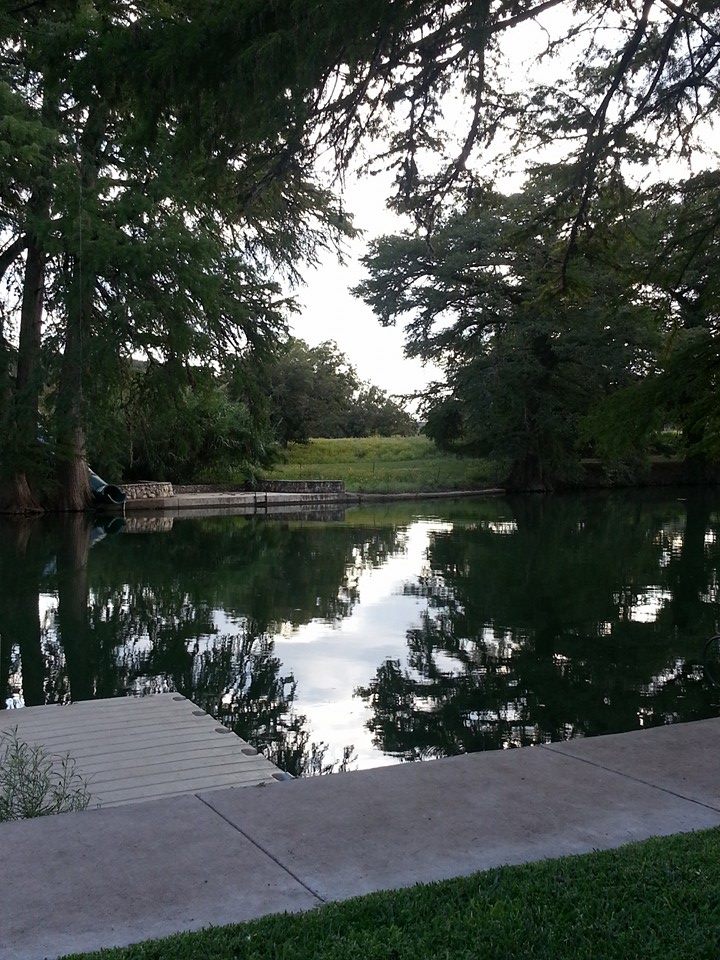
The Guadalupe River runs through Camp Waldemar
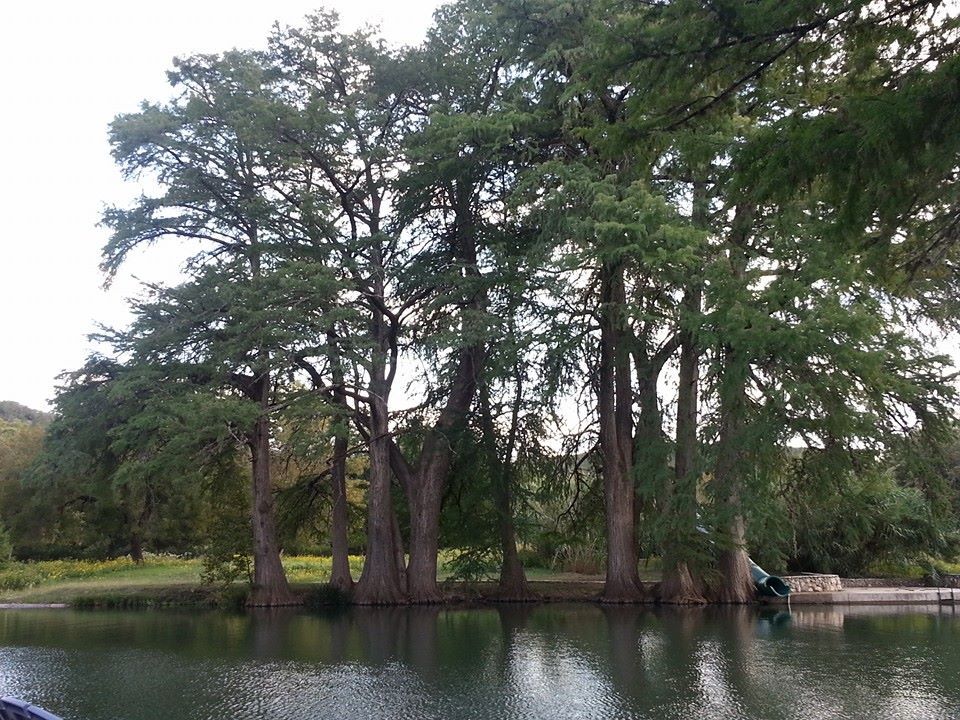
Beautiful cypress trees along the river
Second question: Will I like the food? As it turned out, every single meal was delicious, healthy, and made with fresh ingredients. Among the highlights were bright and crunchy salads every day for lunch, a sweet treat at every meal, and the warm hospitality of Chef Laura and her staff.
Third–and biggest–question: Will I like my classes and make friends with the other campers? The answer? YES! I loved all of my instructors–four talented, creative, funny, and generous women. I learned something new in each class and walked away feeling happy, renewed, and inspired. Each class offered just enough structure and instruction blended with freedom to take our projects in the direction of our choice. I also enjoyed chatting with and getting to know my fellow campers, who were all wonderfully different, creative, and talented in their own ways. During mealtimes, we would sit and chat excitedly about the class we had just taken. We could also view and display projects from different classes, which inspired a lot of “Ooh, I want to take that class next year!”
-
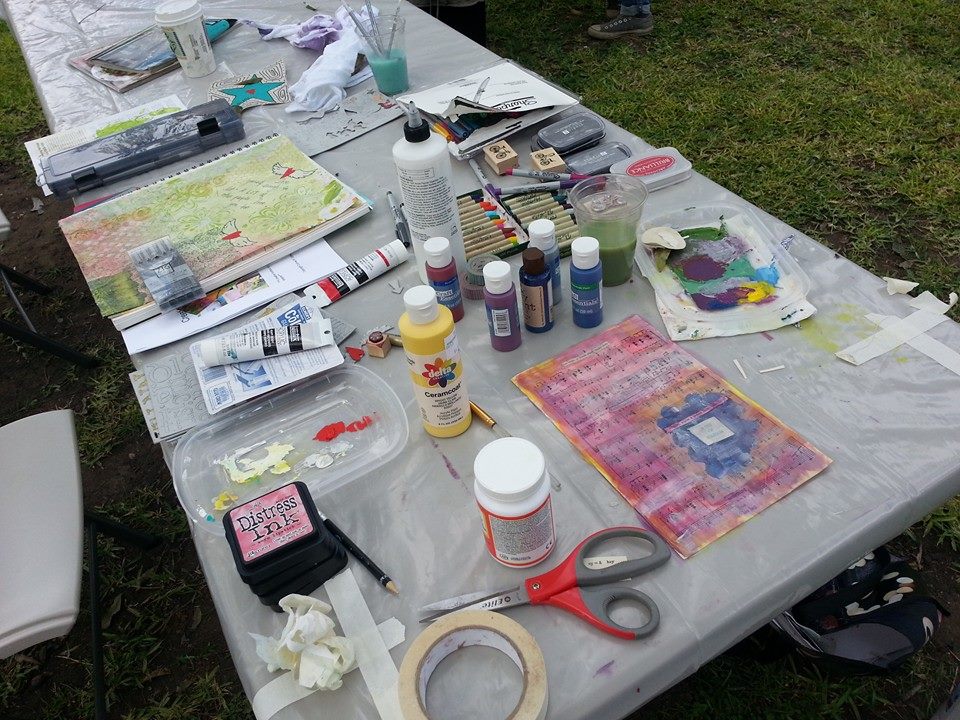
-
A plethora of art supplies
-
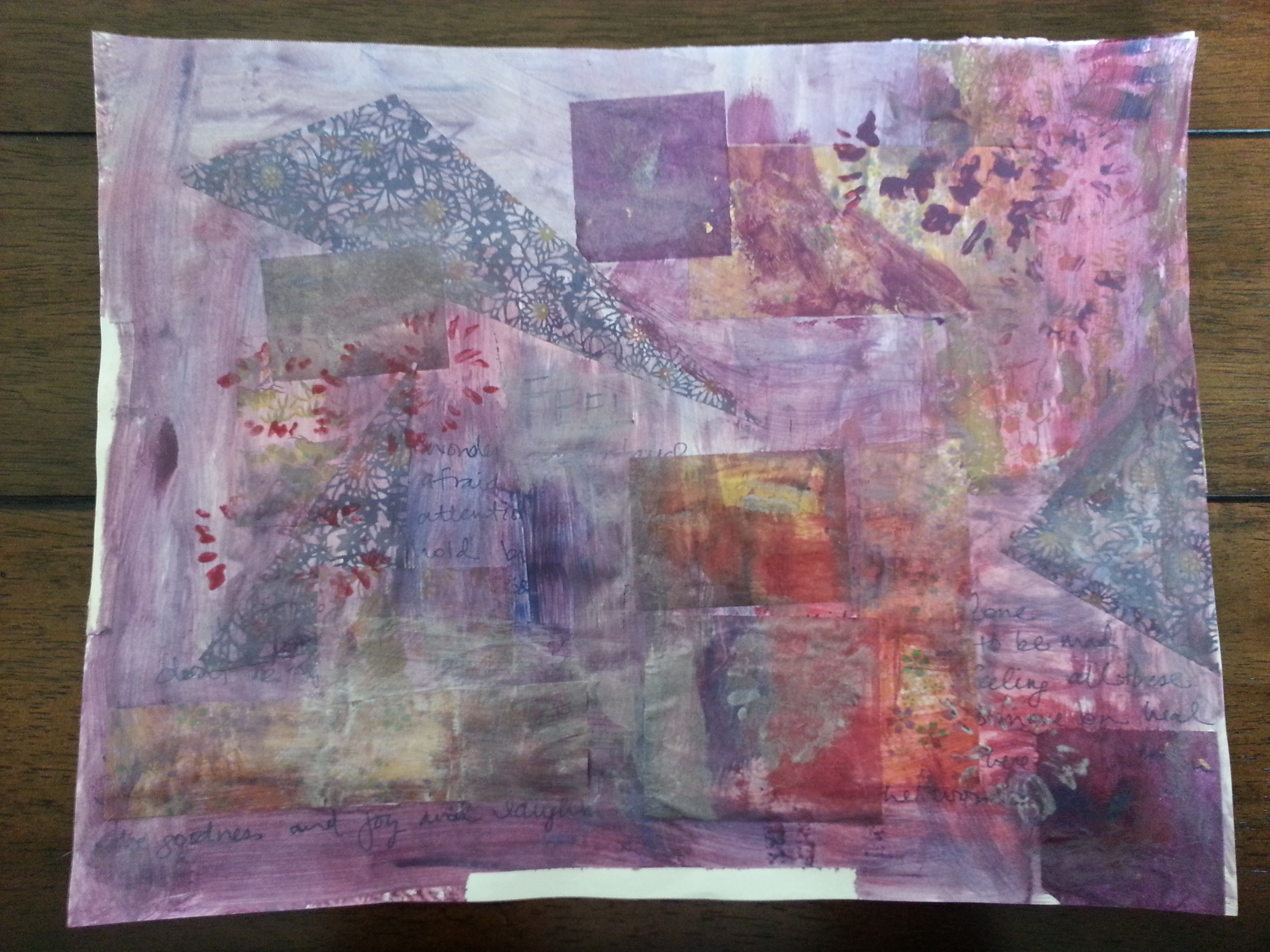
-
Layering words, paint, and other materials
-
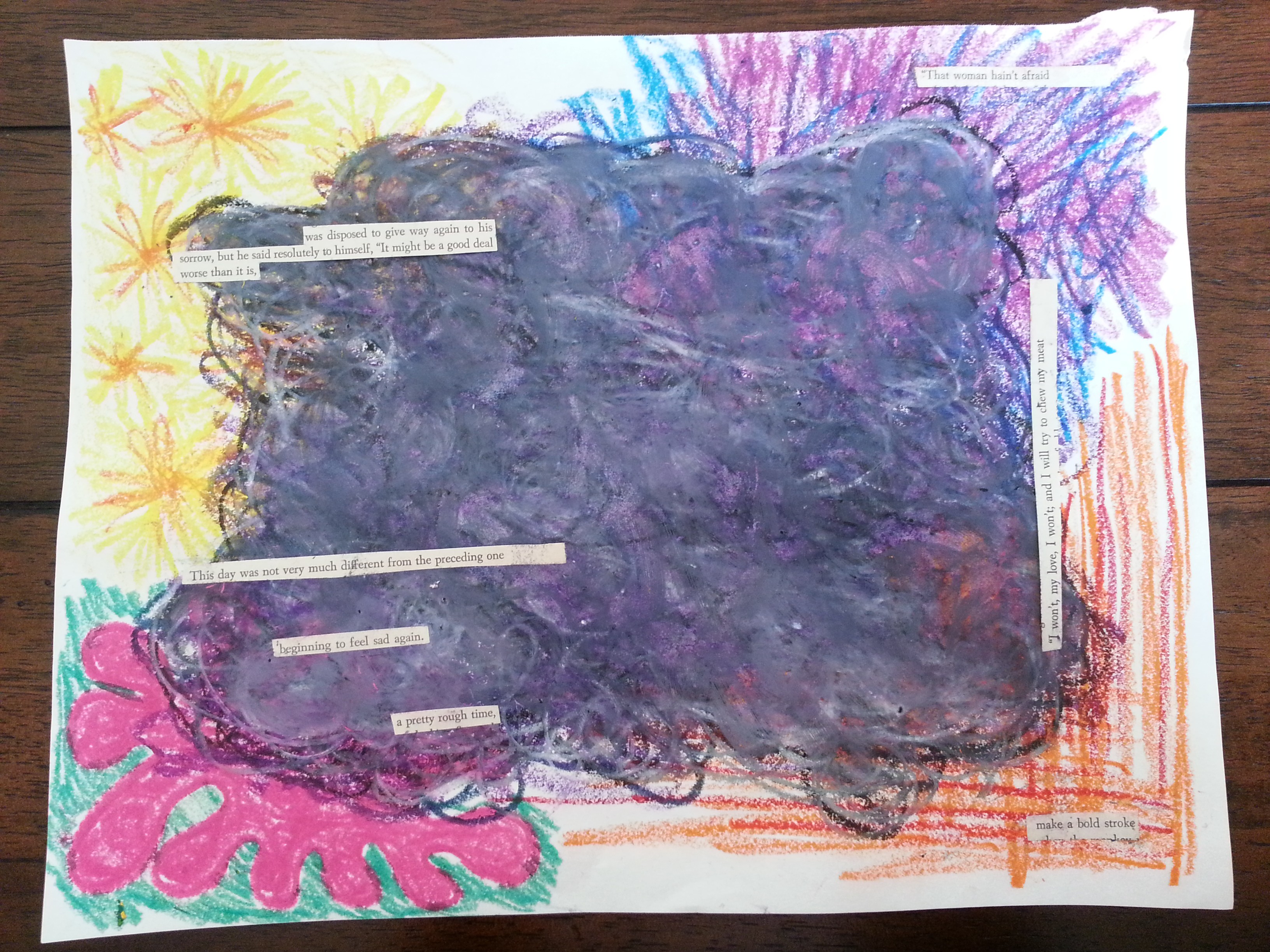
-
Our assignment: draw your inner critic. Mine often comes through as a big cloud of doubt.
-
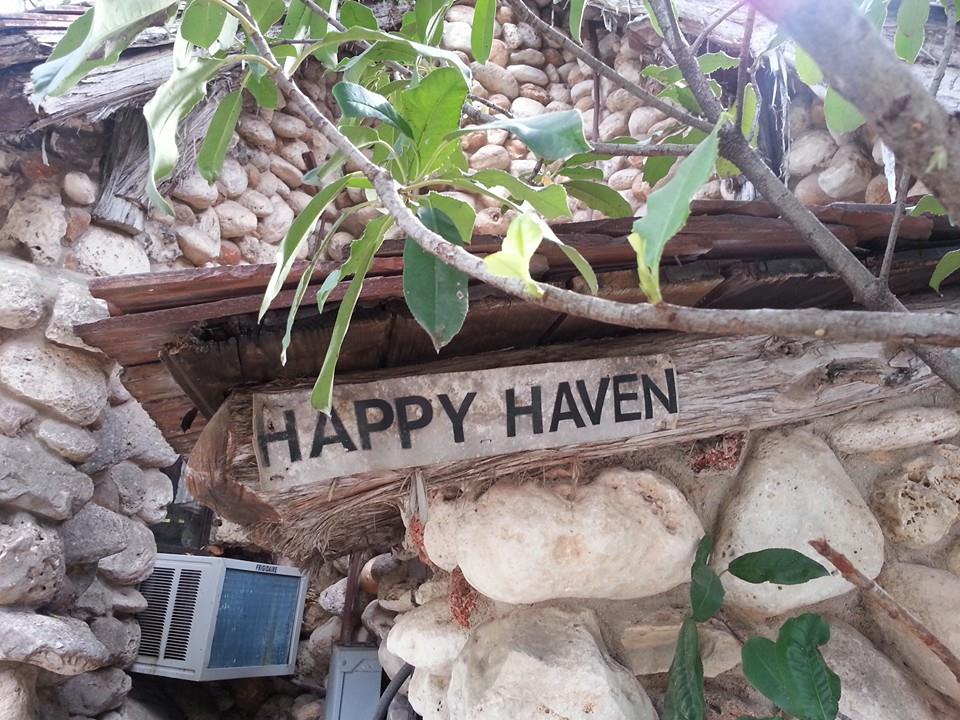
-
One of the Waldemar cabins
-
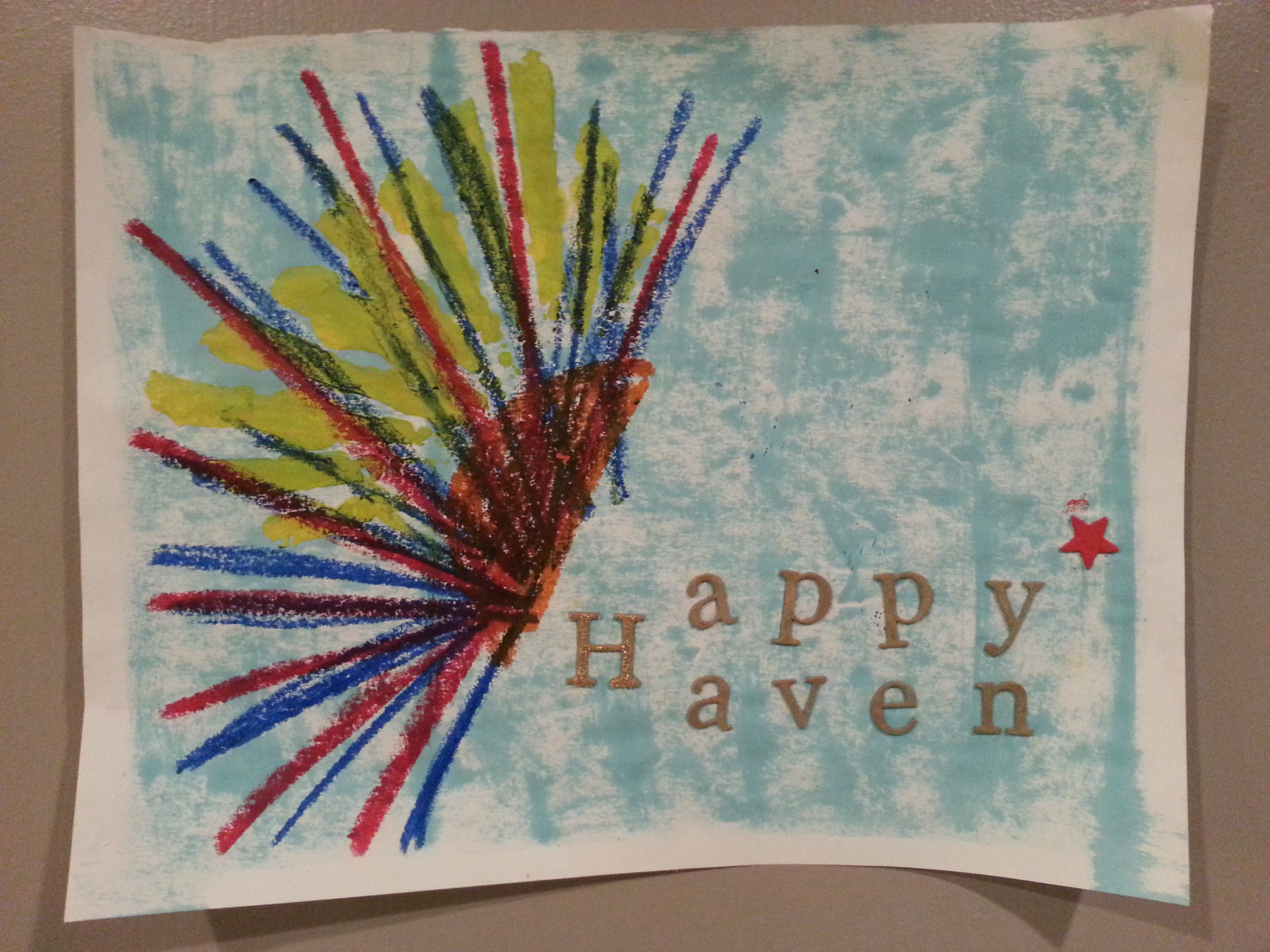
-
Inspired by Happy Haven cabin
-
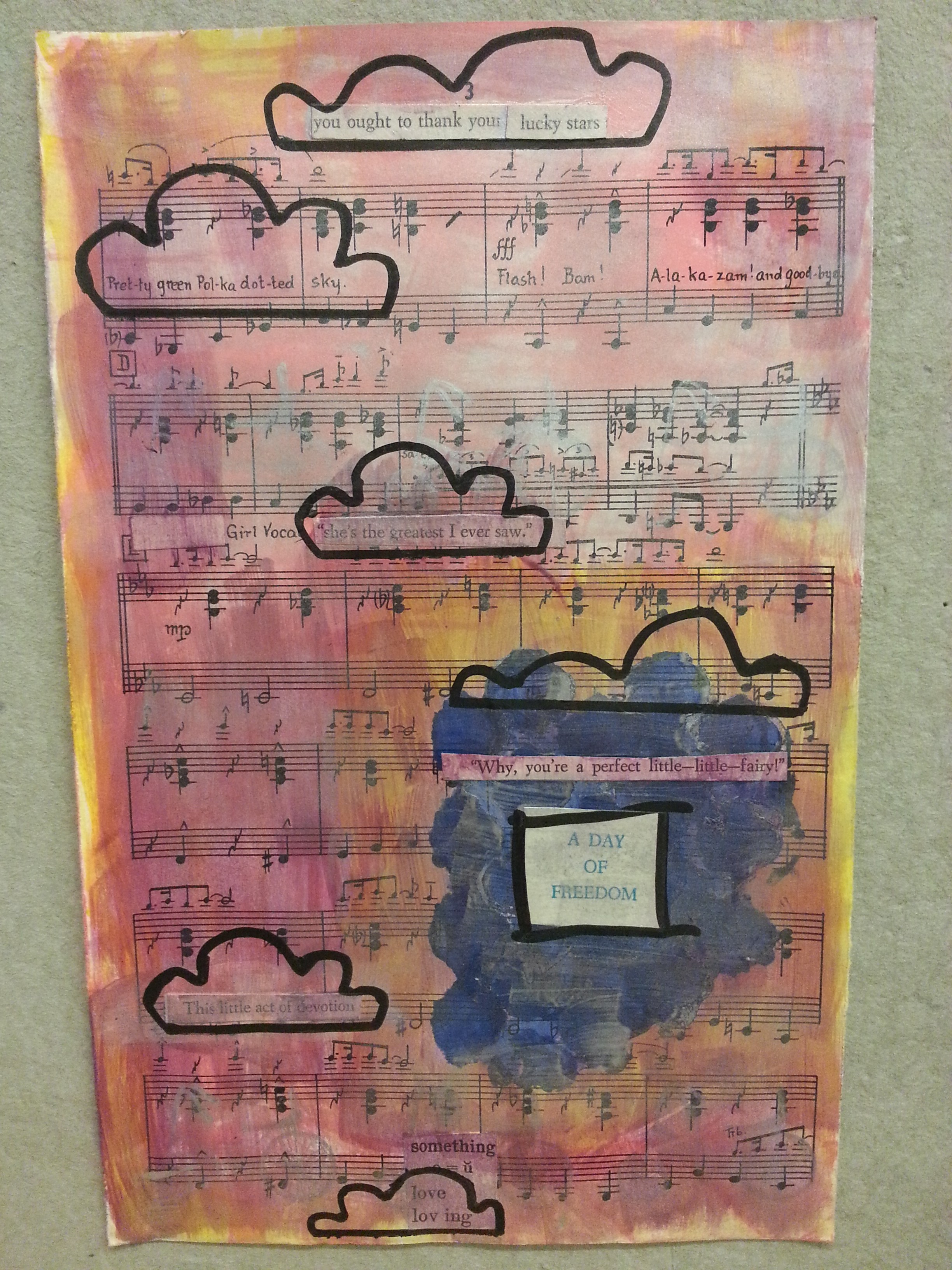
-
You Ought to Thank Your Lucky Stars
-
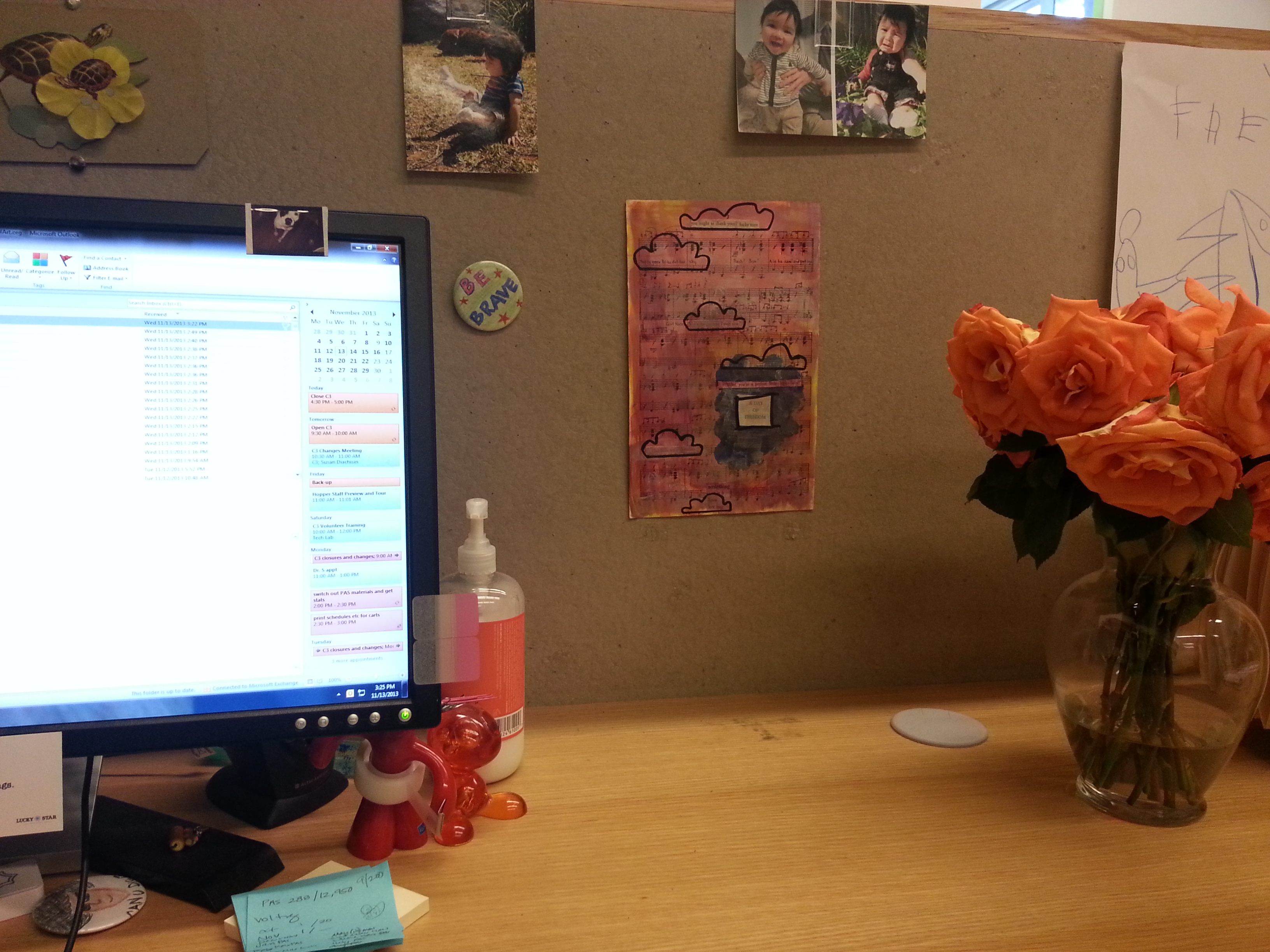
-
A daily reminder of my time at art camp
-
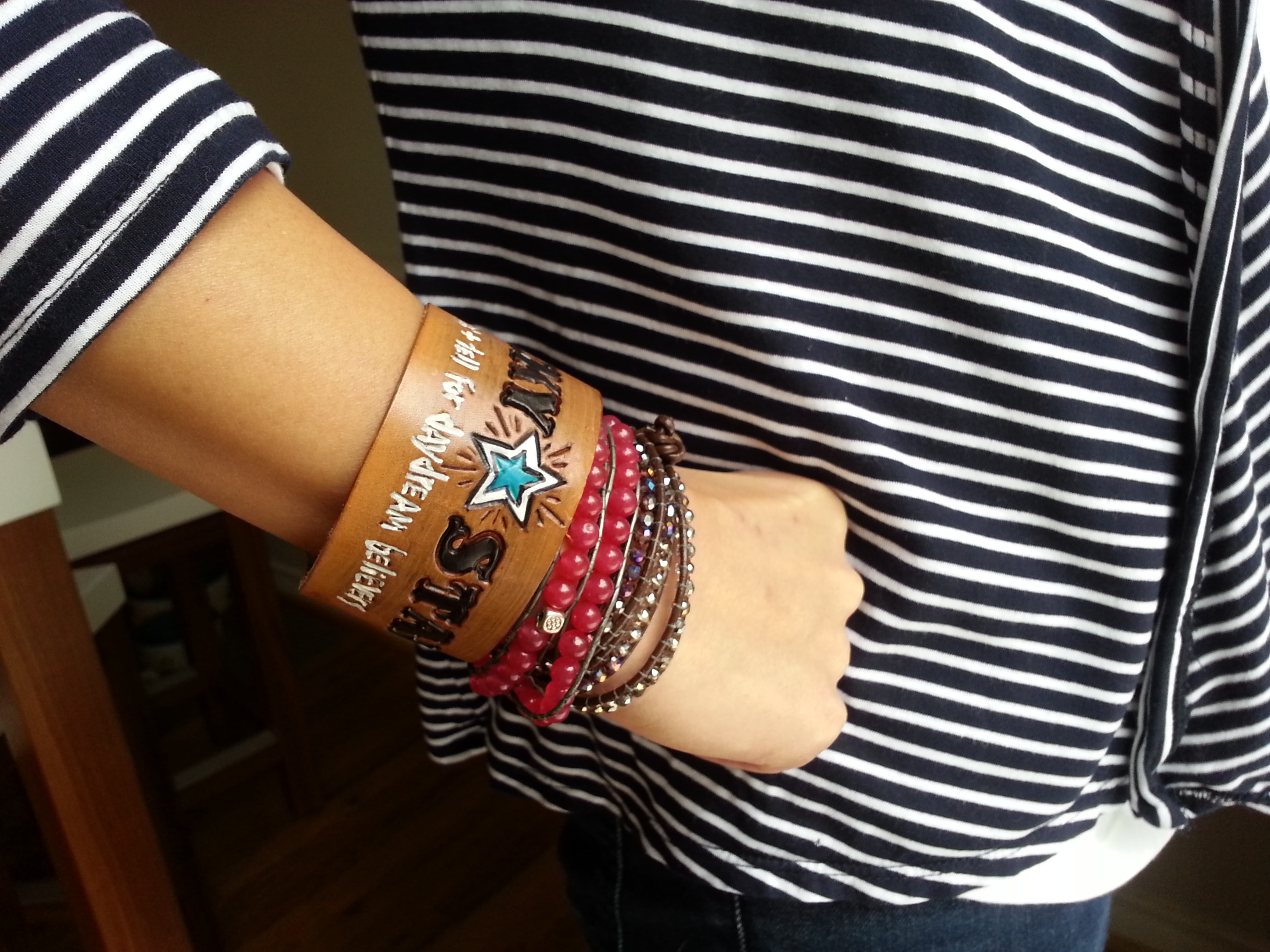
-
Bracelets I made during and after camp, plus a Lucky Star cuff I won as a door prize!
-

-
Modeling the shirts we made in sewing class
Each evening after dinner, a different speaker shared with us her personal and professional passions and creative ideas. Bernadette Noll, author of Slow Family Living and co-creator of the Slow Family Movement, shared wise words related to the time that we give to our family and to ourselves to be creative. We were privileged to get a sneak preview of Lisa Seeger’s TED talk (fast forward to the three hour, fourteen minute mark) about Blue Heron Farm, the goat dairy she runs with her husband, and their strong beliefs about the food we eat and how it is grown and raised. And Shawn Strattman shared her inspiring story of achieving her creative dream, and gave us practical, tangible advice for pursuing our own creative dreams.
But that’s not all! After dinner, after our evening speakers, and after the stars came out, we gathered around the campfire for the lovely musical stylings of Austin-based guitarist and songwriter Mandy Rowden. Mandy charmed us all with her wit and musical talent, and was generously kind and supportive during our sing-alongs.
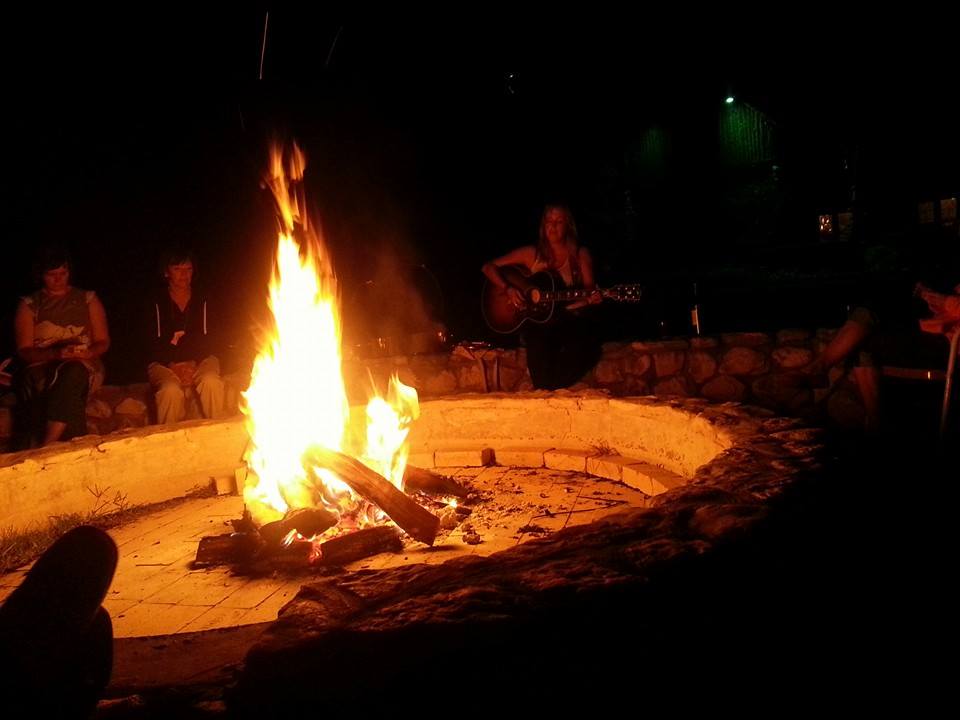
Campfire music with Mandy
At the end of camp, I felt blissfully happy, relaxed, and refreshed. Working at the DMA, I am surrounded by art and creative people. People sometimes assume that I am also an artist, or at least a creative person. While working in a museum environment can definitely be inspiring, it can also be intimidating. I learned many things during my time at Lucky Star, but I walked away with two simple, yet important lessons that I can apply both in my professional and personal life:
- Make time for yourself to be creative. It doesn’t have to be a huge chunk of time, working on a big project with lots of materials. It can be as simple as doodling on a postcard-sized piece of cardboard, writing a message on the other side, and sending it to a friend. Or, you can keep a journal of daily musings, drawings, mixed-media collages – whatever you want. You can even set a timer for five minutes if you want to keep your creative time short and focused.
- Give yourself a break. I hit a creative wall during a class, and my instructor suggested I take a walk. I strolled by the river, relaxed on a hammock, and explored the campgrounds. Much to my delight, I discovered a cabin called “Happy Haven.” When I returned to class, I felt like a weight had been lifted, and I channeled my Happy Haven feeling into my artwork.
I’ve surrounded myself with little reminders of my classes and my new friends, such as the collage I hung in my office and the wrap bracelets I made during and after camp that I now wear daily. A few weeks ago, Mandy happened to come through town and I was thrilled to introduce her to friends during a fun potluck dinner and house concert. My friends and colleagues are probably tired of hearing my many art camp stories, but I cannot emphasize enough the incredible and, yes, life-changing experience I had during those five days in Texas Hill Country at Lucky Star Art Camp.
Melissa Gonzales
C3 Gallery Manager
